Now the second generation Audi Q7 has been around for about a year, Audi’s latest sports version of their flagship SUV is in the starting blocks and ready to boost the Q7 model range. The 2017 Audi SQ7 TDI was announced shortly after this year’s Geneva Motor Show and promises to be the most powerful Q7 to date.
The status of most powerful Q7 was previously reserved for the range-topping first generation Q7 that casually featured a massive V12 diesel engine. With all that has happened last year and the ever more pressuring worldwide emission regulations, we simply must accept that the mighty V12 TDI has been sent into retirement and that downsizing was inevitable.
Replacing the mighty V12 is Audi’s latest 4.0-liter V8 TDI engine, a true piece of engineering art that wipes the floor with the dated V12 when it comes to efficiency. The fact that the SUV loses four cylinders but gains the glorious ’S’ logo shining on both the rear-end and front grille, must account for something, and it makes you think whether this downsizing deal is such a bad tradeoff after all. In fact, the SQ7’s power plant has the honorable status of being the most powerful diesel engine currently on the planet.
More power, some weight savings, and loaded with the latest tech on offer. Add a range of S-line dynamic modifications to that list and on paper the SQ7 should be able to break any records set by its predecessor with ease. With great expectations, I traveled out to the Elzas province in Eastern France to take the new SQ7 out for a spin on the challenging roads that carve through the Vosges mountains.
Engine, Chassis and Performance
Let’s cut right to the chase and discuss the impressive new 4.0-liter V8 TDI engine that is at the center of the SQ7’s performance. The new power plant produces 435 hp (320 kW) and a massive 900 Nm of torque, available from as low as 1,000 rpm to 3,250 rpm. No, you did not read that wrong, the SQ7 sets a new benchmark in its segment and despite its considerable curb weight of 2,270 kg, it shoots to 100 km/h in just 4.8 seconds. Its top speed is electronically limited at 250 km/h (155 mph).
The numbers don’t lie, and the car’s turbochargers play a vital role in raising the Q7’s performance bar. By some interpreted as three turbo chargers, the 4.0-liter V8 is actually twin-turbocharged and supplemented by the likes of an innovative electric powered compressor (EPC). The EPC plays a crucial role in establishing the maximum amount of power available in the low revs through eliminating any signs of turbo lag. The slightly delayed response that is characteristic for any turbocharged engine, should be pretty much non-existent in the SQ7, thanks to the EPC that cuts down the response delay to an unnoticeable 250 milliseconds.
The two exhaust-gas turbochargers feature a variable turbine geometry and produce up to 2.4 bars of boost pressure. The EPC comes in play whenever the gas provides too little energy for rapid power generation. The electronically powered device is installed in a bypass downstream of the intercooler, fairly close to the engine. It powers the engine’s compressor wheel up to 70,000 rpm almost faster than light and ultimately ensures a speedy power impulse or acceleration in any given situation.
Power for the EPC is drawn from a 48 volt electrical subsystem that is able to deliver 13 kW at its peak. Just like the EPC, the electrical subsystem is also a novelty first featured on the new SQ7. Power for the subsystem is saved in a 0,5 kWh compact lithium-ion battery that is practically stored in the lower level of the luggage compartment. All the technical innovations don’t stop here; consider Audi’s new valve lift system (AVS) that allows for sequential charging.
With each exhaust valve serving one of the two turbochargers, the AVS controls activation and deactivation of either one of the valves depending on which turbocharger is engaged. In the low rpm the AVS keeps one valve closed so the entire exhaust flow reaches the active turbocharger only, significantly increasing its performance. Between 2,200 and 2,700 the second valve is opened, while the second turbocharger kicks in simultaneously. In the end it is when both turbochargers are activated in the 1,000 – 3,250 rpm range, the SQ7 reaches its maximum output of 435 PS (429 bhp) and 900 Nm of torque.
Linked to the new 4.0-liter V8 TDI is the new eight-speed tiptronic automatic transmission that has been fine-tuned to enhance dynamic performance. The gearbox features both automatic and manual modes, and ultimately the driver takes control by using the shift paddles behind the steering wheel.
At the center of the SQ7’s chassis is Audi’s Quattro all-wheel drive system with a 60:40 rear- to front-axle setup. It is constructed entirely out of aluminum for both strength and weight-saving reasons. It comes together with electromechanical power steering, Audi drive select, and Audi adaptive air suspension with S-specific tuning as standard.
Customers that are looking to up the handling capabilities of the SQ7 even further can tick a few ‘technology modules’ off the options list; all-wheel steering, a sport-differential and the completely new electromechanical active roll stabilization. All-wheel steering quite speaks for itself, while the sport differential largely improves handling thanks to the torque-vectoring system that Audi first introduces on one of their SUVs. The new anti-roll bar however, is one of those nifty new attributes that requires a little more explanation.
Just like the EPC, the electromechanical active roll stabilization bar is electronically powered and taps into the new 48-volt subsystem if needed. During sporty driving, an electric motor that is mounted on both the front- and rear axle ensures the tubes are twisted in opposite directions. This ultimately leads to less body roll and thus faster cornering, but also a significant reduction of understeer.
The fact that it drives power from the new subsystem makes it more powerful than any conventional hydraulic anti-roll bar. What’s more is the system’s ability to recuperate energy, an innovative way of charging that I personally had a look at during the Audi future energy performance days last fall in Madrid. It works wonders when driving on a bumpy road, where the bumps deflect either of the wheels and energize the stabilizer. The result is that the new active anti-roll bar now converts each impulse into energy that is routed back into the 0,5 kWh lithium-ion battery.
Design
Audi have done a few minor modifications to the SQ7’s design to make it stand out slightly over the standard Q7 and the Q7 e-tron models. The flagship SUV’s firm proportions (5 meters in length, and 1.97 meters in width) remain roughly the same, and its drag coefficient is set at 0.34.
At the front the SQ7 get’s a slightly more aggressive look with the singleframe radiator grille being accentuated by either a mix of chrome and brushed aluminum or a gloss black finish depending on the customer’s wishes. The front air-intakes get dual slats, the upper part of the mirror caps are finished in aluminum while a combination of the standard 20-inch wheels and chiseled side sills boast a sporty appearance from the side.
More noticeable are the modifications on the rear. There is a wider and more distinctive roof spoiler and the car comes with a large rear diffusor. Revealing the car’s true character from the outside are the four new rectangular tailpipes, of which it looks like Audi may have drawn inspiration from a not to be mentioned competitor. Regardless of where the idea came from, the fresh looking quad-pipes seem to be an excellent fit for the SQ7’s rear-end and go well with the all-around shape and sharper design of the second generation SUV.
Finishing touch are the SQ7 badges at both the front and rear of the car, and a shiny V8 T logo just above the front wheel arches. The SQ7 comes in 12 different paint finishes as standard, while the Audi Exclusive division has a never-ending range of colors to pick from if one of the standard 12 does not meet a customer’s preferences.
Interior
On the inside of the SQ7 the focus on luxury and space is unequivocal. The SQ7 is the most spacious SUV in its segment and optionally provides space for seven people. Its interior design is simple and clean, yet elegant. Standard is the three-spoke sports steering wheel while the sports seats with active side bolsters specced on our test car come optional. The car’s comfort and luxury are additionally underlined by the optional seat-ventilation and massage functions.
The S version comes standard with a range of leather and subtle accents of Alcantara. If customers desire more of it, from diamond-shaped upholstery to carbon and veneer, the comprehensive options list offers solutions. Illuminated door sills with the SQ7 logo greet passengers and driver upon entrance, while further mood lighting comes in 32 ambient colors as an option.
My test vehicle was specced with black valcona leather and Alcantara sports seats, while a combination of brushed aluminum inlays and dark wood veneer formed the large dashboard. The interior contrasted nicely with the Tofana white exterior color and comes very close to how I would personally configure the interior of the SQ7 if I were to purchase one.
Driving Experience
Having arrived at the airport of Basel / Mulhouse, I opted for the nearly fully-specced Tofana white SQ7 with optional 21-inch five-spoke wheels and all-black interior. Starting out with a mild drive to our lunch stop about half an hour away from the airport, there was plenty of room to get familiar with the car’s all-around comfortable interior and impressive variety of driver’s assistance systems. As I had driven both the Q7 e-tron and 3.0-liter V6 Q7 before, it only took a few minutes to get comfortable and be reminded of its comprehensive capabilities. This is also the reason why I intend to stick to the dynamic nature of the SQ7 instead of focusing on its driver assistance systems and the like, which I have thoroughly covered in my Q7 e-tron review.
Topping my to-do list for the day was of course putting the SQ7’s newly developed V8 to the test and witness that insane acceleration for myself. I switched over to dynamic mode using the drive select menu and once the rev counter was somewhere halfway between 1,000 and 3,000 rpm, I kicked down the throttle and a smile instantly appeared on my face. It feels rather funny when a sizable SUV with a gross-weight of around 2,300 kilograms pulls forward unlike anything I have experienced before. Well, of course there’s the electric drivetrain but surely any other turbocharged combustion engine car in the same weight range that I have driven cannot match this instant and brutal power blast.
Just before we arrive at our lunch stop, a relaxed cruise through town in dynamic mode made me aware of the raw growl coming from the SQ7’s exhaust pipes. Buildings on both sides of the road create an echoing effect ensuring 9 out of 10 people look over their shoulders wondering where that rumble comes from. But no matter where you are, the SQ7 has an excellent ring to its soundtrack that comes out exceptionally well when the car is running stationary or cruising at low speeds. It really surprised me, especially considering the fact it’s a diesel. Sufficient grounds to find out more and ask one of the experts on site.
The secret of the best sounding diesel I have ever heard finds itself in speakers that are installed in the exhaust pipes. It explains why the SUV sounds so good from the outside and is less noticeable from the inside. Sure, the sound is still good when you sit behind the wheel but the cabin of the SQ7 is well isolated and Audi did not place any speakers near the front of the car, which is standard procedure for many other turbocharged cars nowadays.
After a few insightful conversations with SQ7 experts, it was time to take the SQ7 up some of the most challenging roads of the region. Pushing the heavy SQ7 on the bendy alpine roads, the car did not fail to impress. With the sport differential and electromechanical anti-roll bar in place the car boosts confidence and at times it feels like it has the handling capabilities of a sports sedan. Even considering the wet conditions that day, high-speed cornering was a piece of cake and it was just the occasional lack of feedback from the wheel that reminded me of the chunk of weight I was pulling up some of the highest mountains of the Vosges.
As I mentioned the weather conditions were not in our favor, yet I did not feel like I was significantly limited in terms of being able to thoroughly put the dynamic character of the SQ7 to the test. Fog, rain and even bits of snow were no match for the SQ7, that of course also has the efficient Quattro all-wheel drive system at its disposal. Arriving back at our lunch stop, there was a short highway blast back to the airport left to finish the day.
What To Spec and Competition
Available from €89,900 in Germany, the Audi SQ7 TDI already comes with several features as standard that otherwise come as options on the basic Q7. Audi says it comes with €10k worth of options standard, including LED headlights, 20-inch wheels, dynamic exterior, adaptive air suspension with S-specific tuning, power-adjustable and heated sport seats in leather and Alcantara, brushed aluminum inlays, 3-spoke sport steering wheel with multifunction buttons and shift paddles, anti-theft alarm and an enlarged fuel tank with a capacity of 85 liters.
Our test model was very well equipped indeed and would lift the total price to well beyond €100k. As per usual with Audi the list of options is long and can certainly set you back an additional €30k to €40k. To get you started I would suggest the sport differential and electromechanical anti roll stabilization without the blink of an eye. They are some of the more pricier options on the list but are the missing links in ultimately restoring the car’s balance when it comes to handling and power.
Our test subject was equipped with all 24 driving assistance systems that are part of three separate packages called city, parking and tour. Fairly basic options such as adaptive cruise control are part of the city package and is something I could definitely recommend. It will also provide you with traffic jam assist, which is quite relaxing, as well as active lane assist and blind spot detection. A parking assist in the form of a rear-view camera is no superfluous option either seeing the size of the car. It also comes with 360 degrees views and additional sensors.
I am personally not a huge fan of the standard 20-inch wheels and would probably opt for the ten-spoke wheels that match very well with the Daytona grey paint job. On the interior side of things I would probably stick with the standard sports seats that are very comfortable and provide plenty of support when need be. However, the interior is by all means very clinical and if you would want it to feel more warm you can always opt for the premium leather and a combination of warm wood accents in the dashboard.
As nothing has been released on a possible RS Q7, the Audi SQ7 TDI is up against some serious competition from both Germany and the UK. The BMW X5 M and Mercedes-AMG GLS complete the traditional German delegation while Range Rover’s Sport model should be regarded as a rather serious competitor too.
Conclusion
Having driven several variants of the second generation Audi Q7, the Audi SQ7 TDI exceeded my expectations the most. Audi once again lives up to the slogan of ‘Vorsprung durch Technik’ and comes with numerous innovations that obviously contribute to the impressive performance of this SUV. Above all it is well balanced and does not compromise comfort at the cost of its dynamic capabilities.
If there is the need for more power, the flick of a switch turns the SQ7 into a torque monster and pulls to mind-boggling speeds in no-time. Apart from the acceleration rush and comfortable high-speed cruising on the autobahn, the SQ7 feels similarly at home on twisty mountain roads and proofs to be a truly thrilling companion during the way up. This all goes paired with a great sounding V8 roar, something Audi have truly nailed on the new SQ7. The new range-topping Audi Q7 is well-deserving of the shiny S badge!



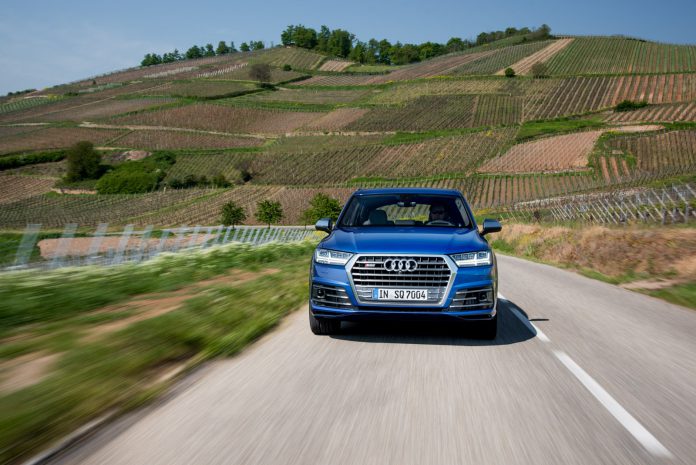
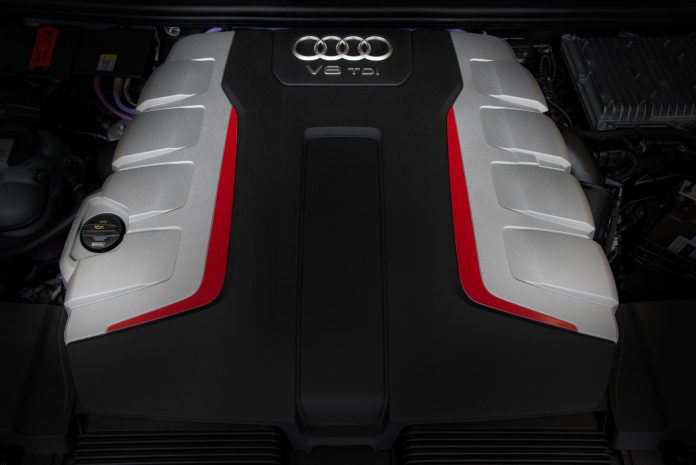
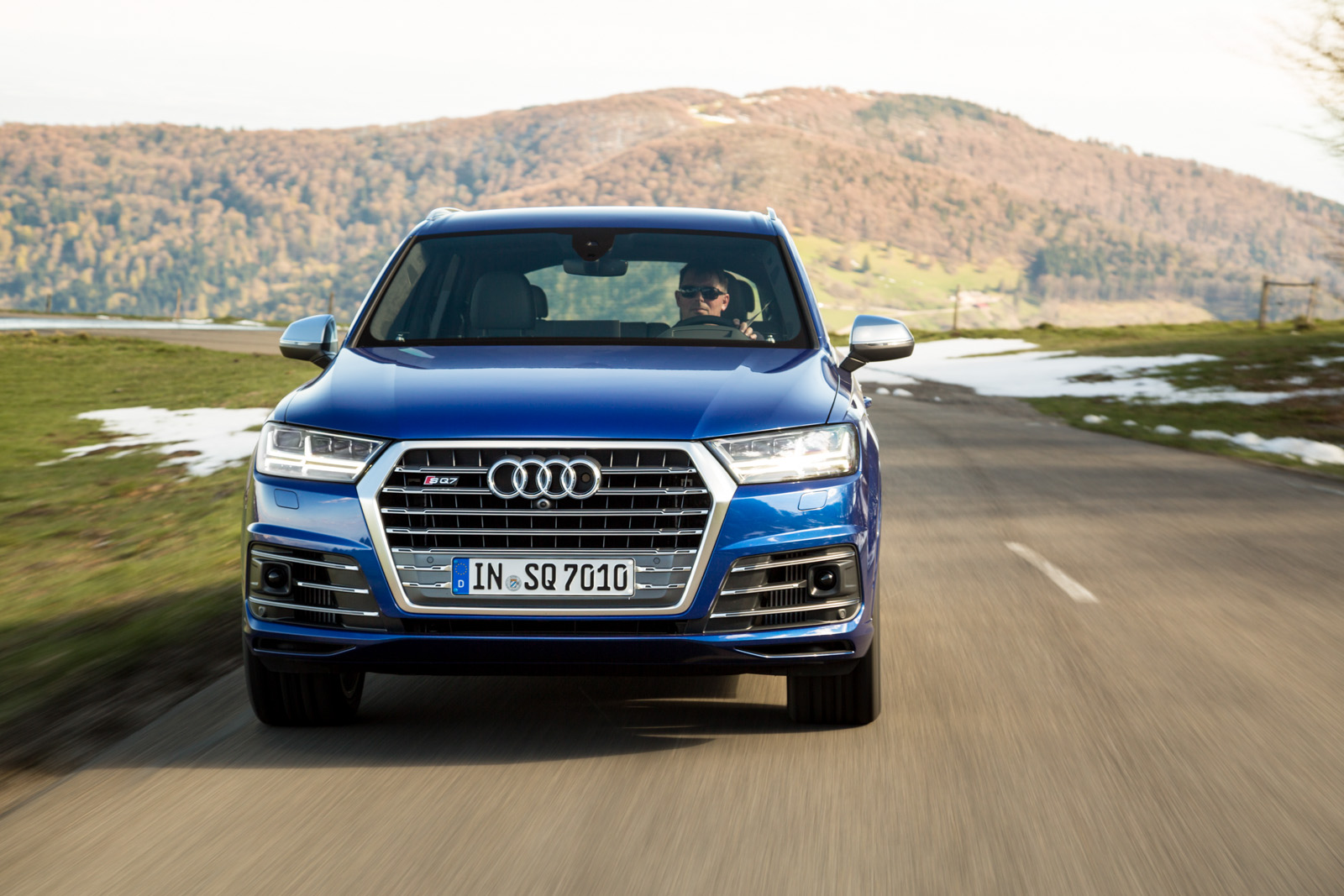
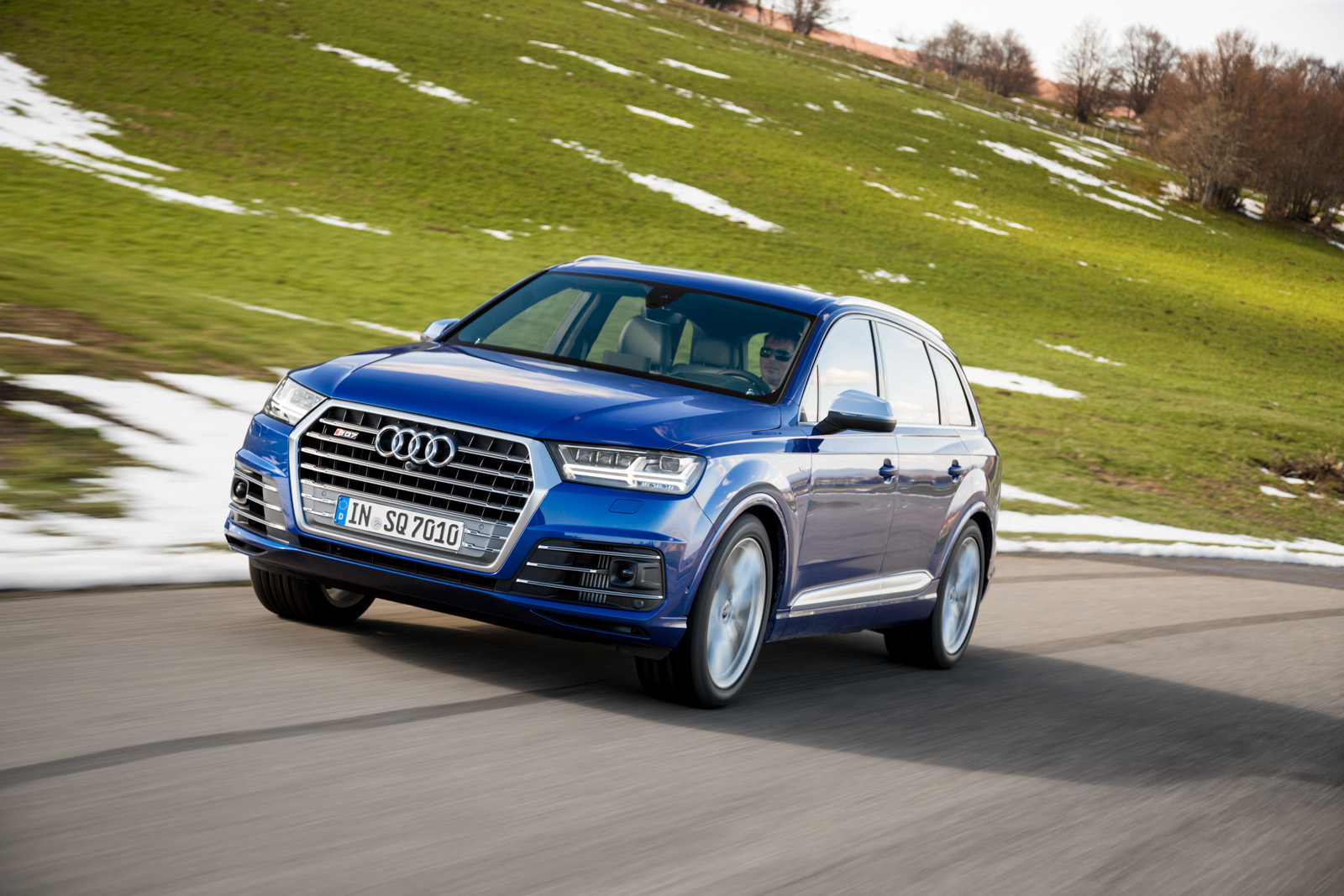


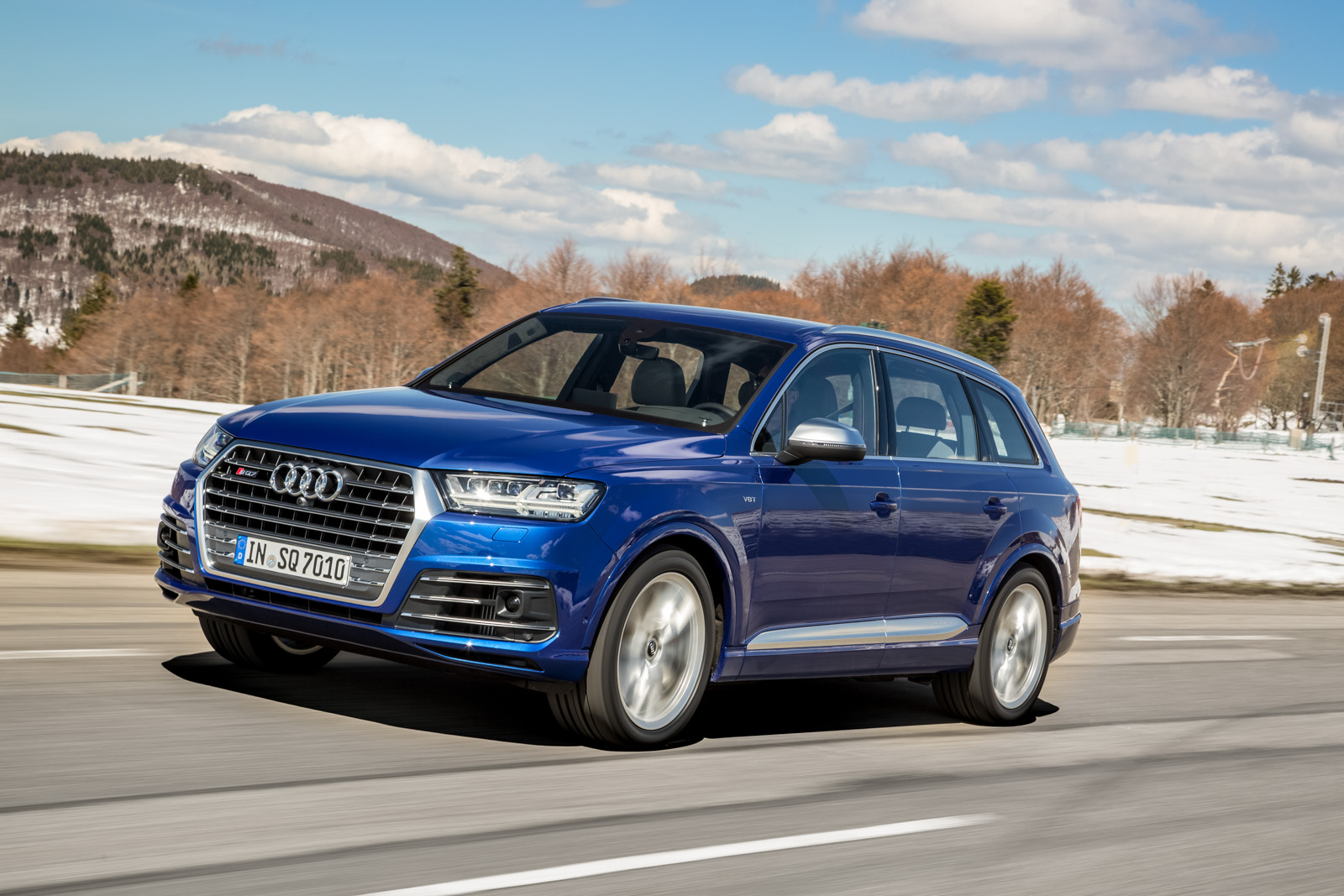
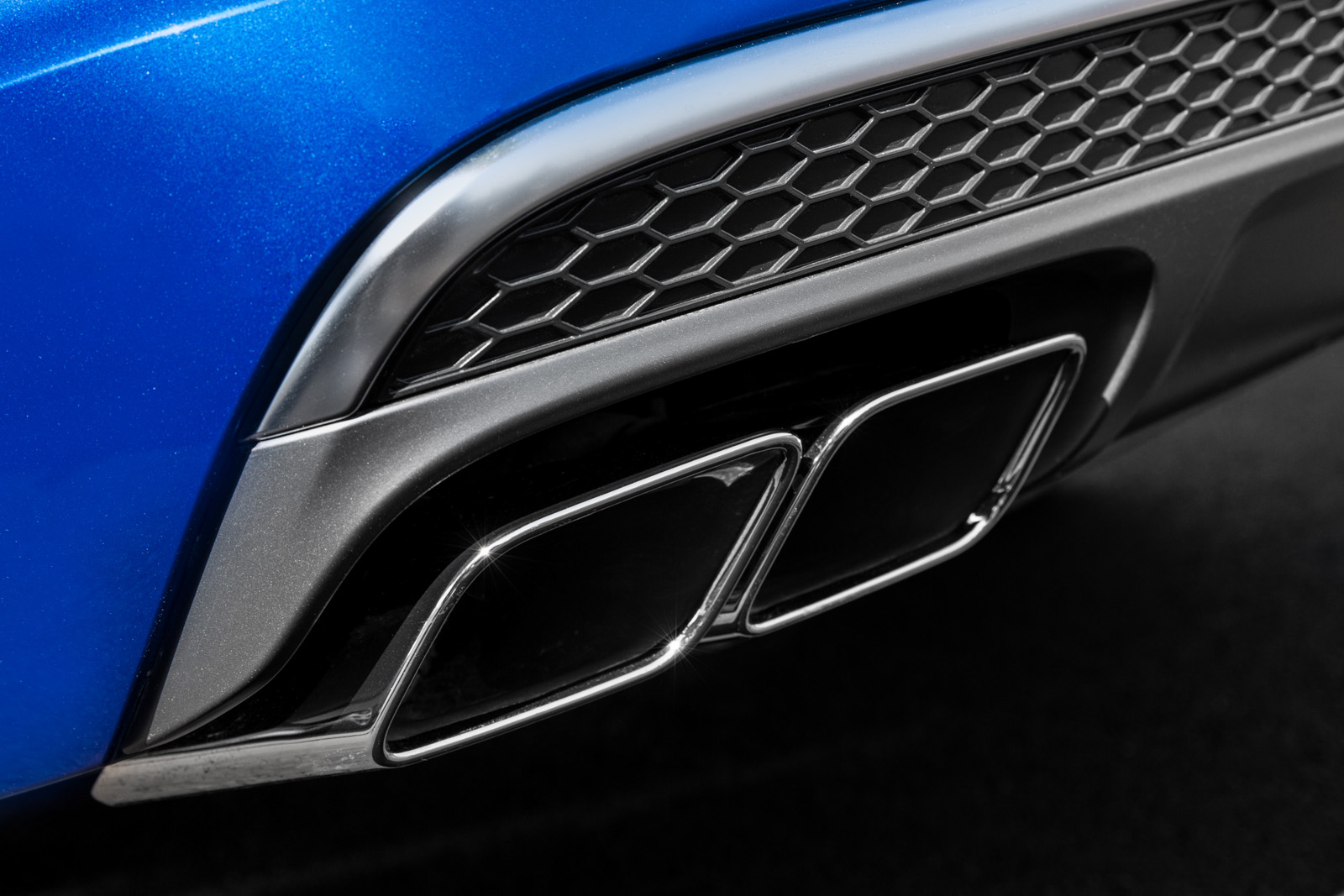
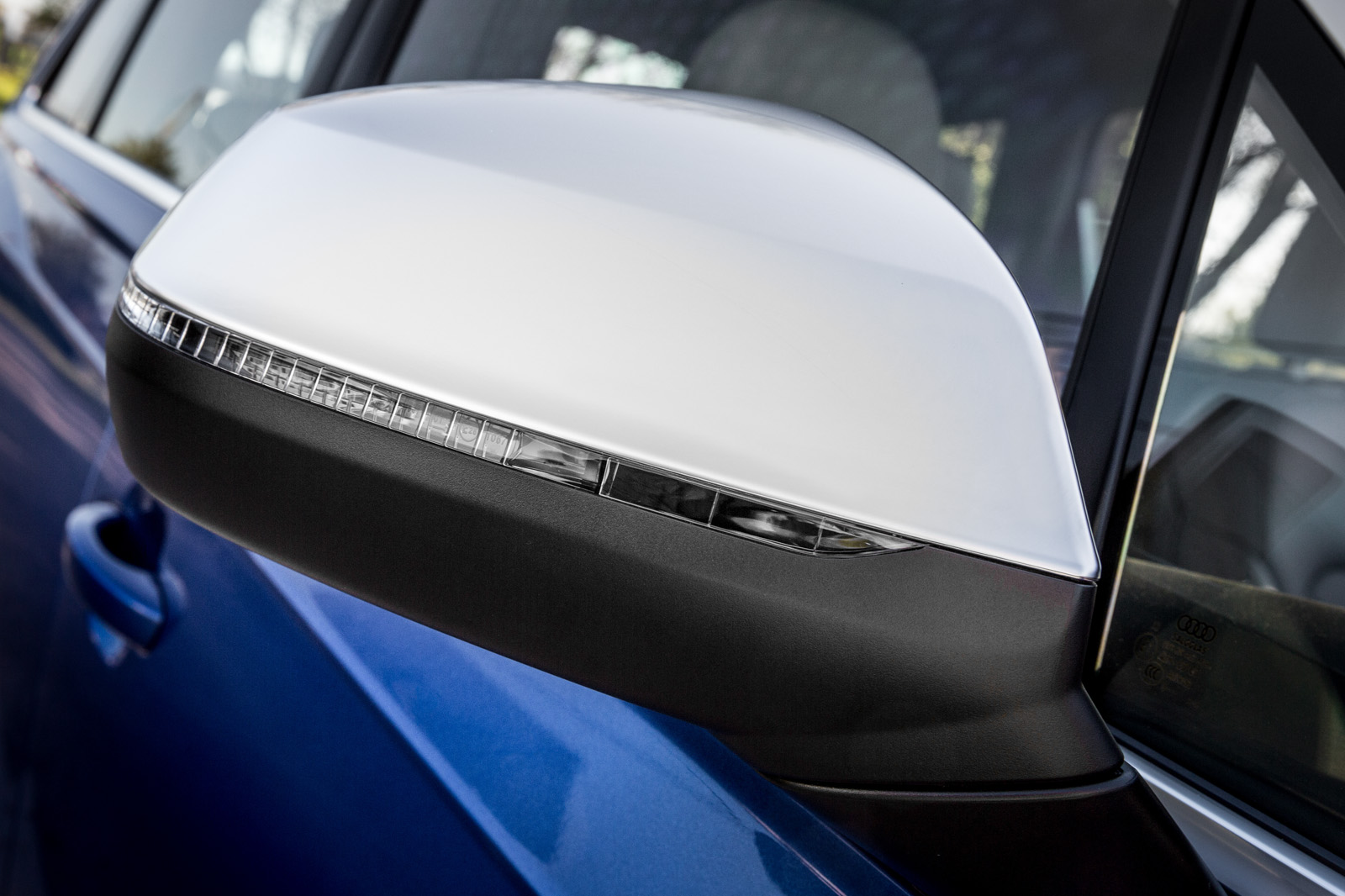
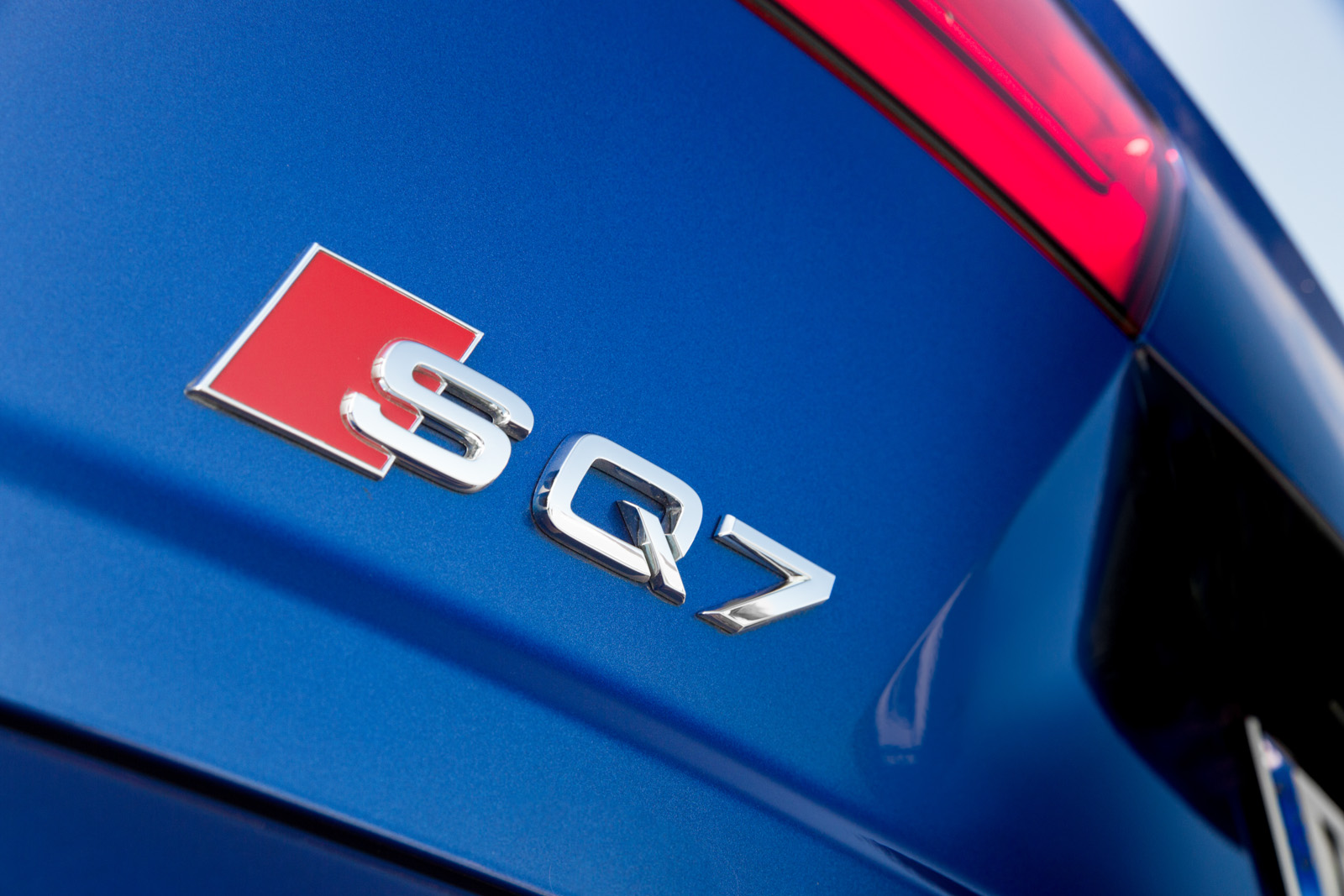
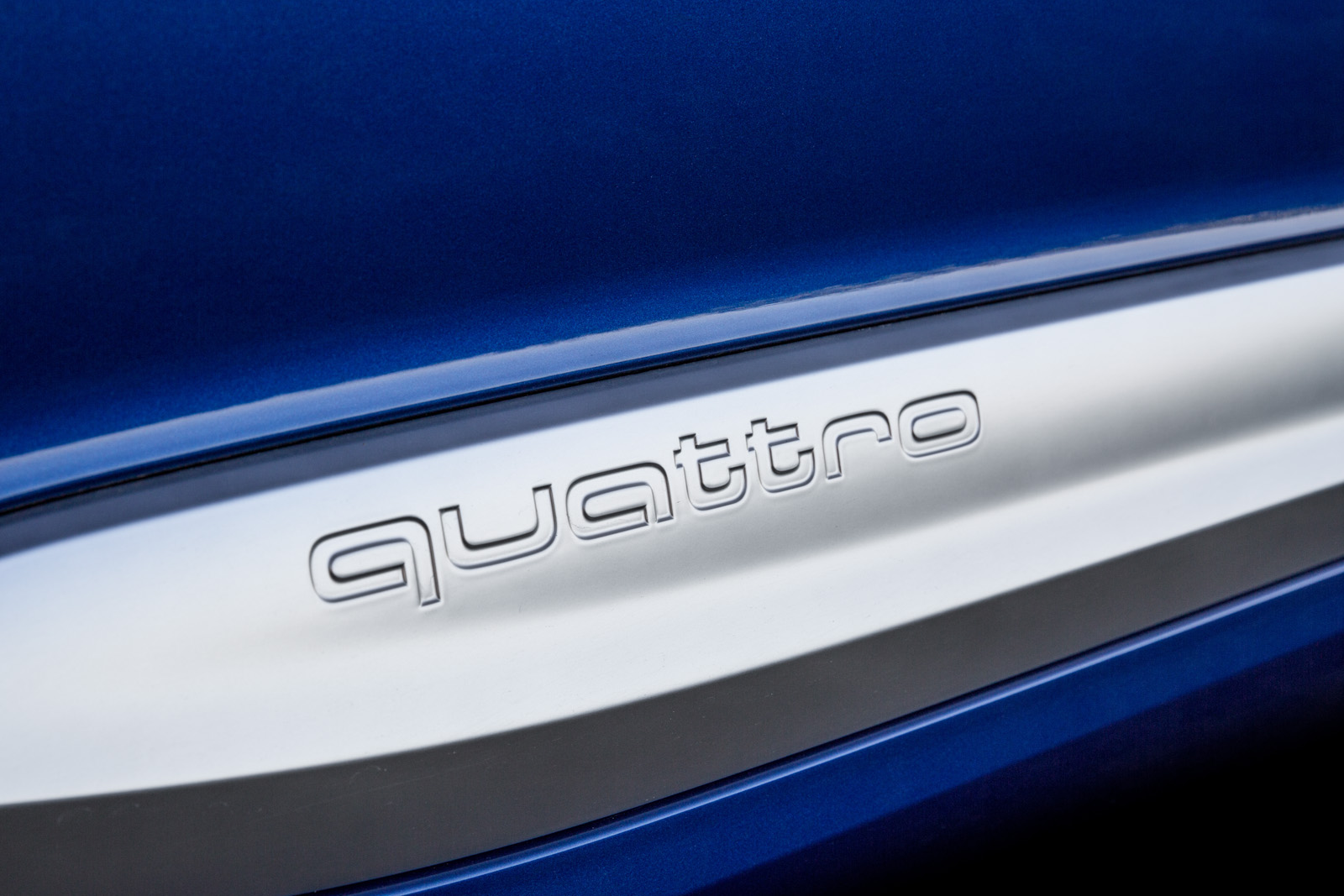
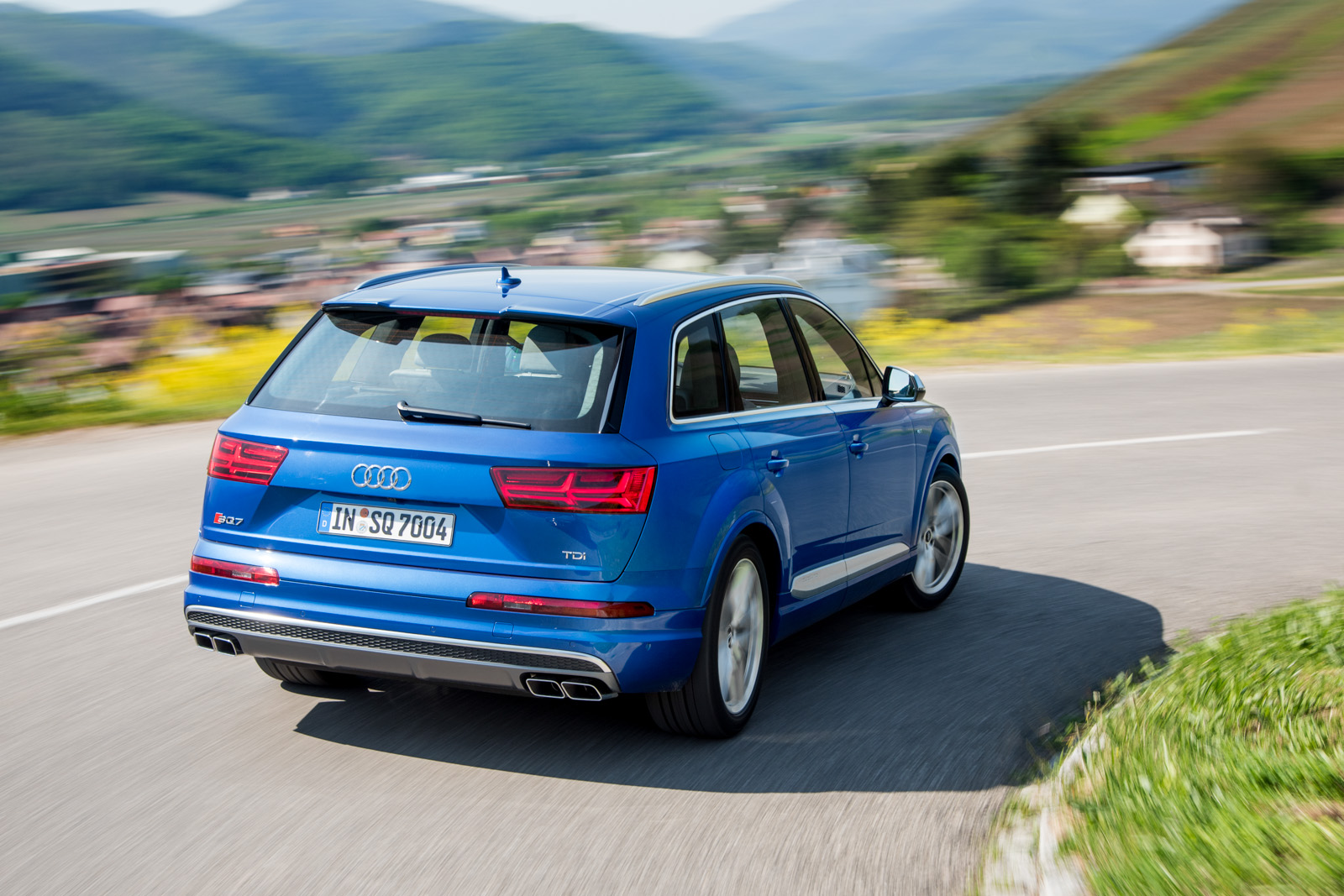
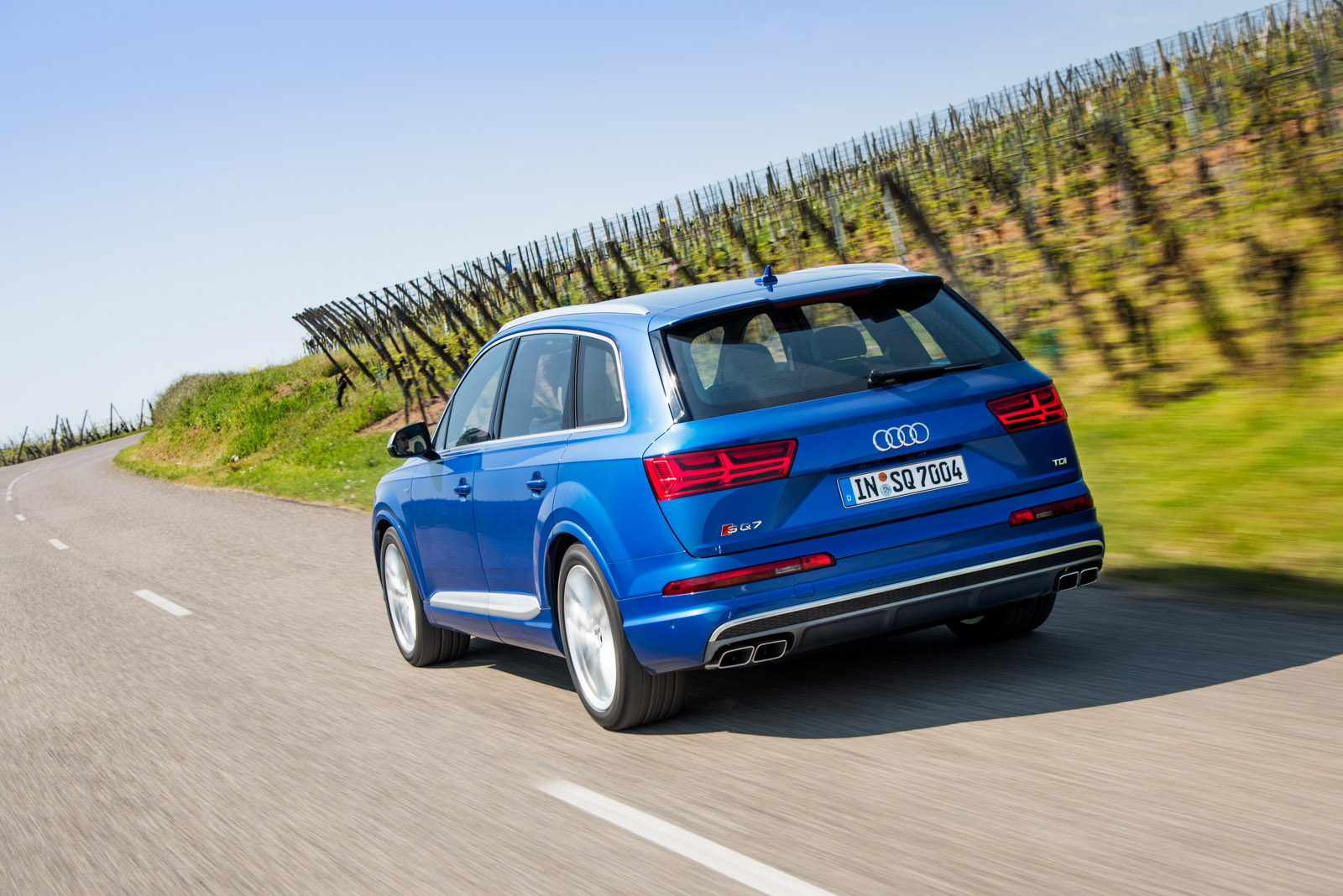

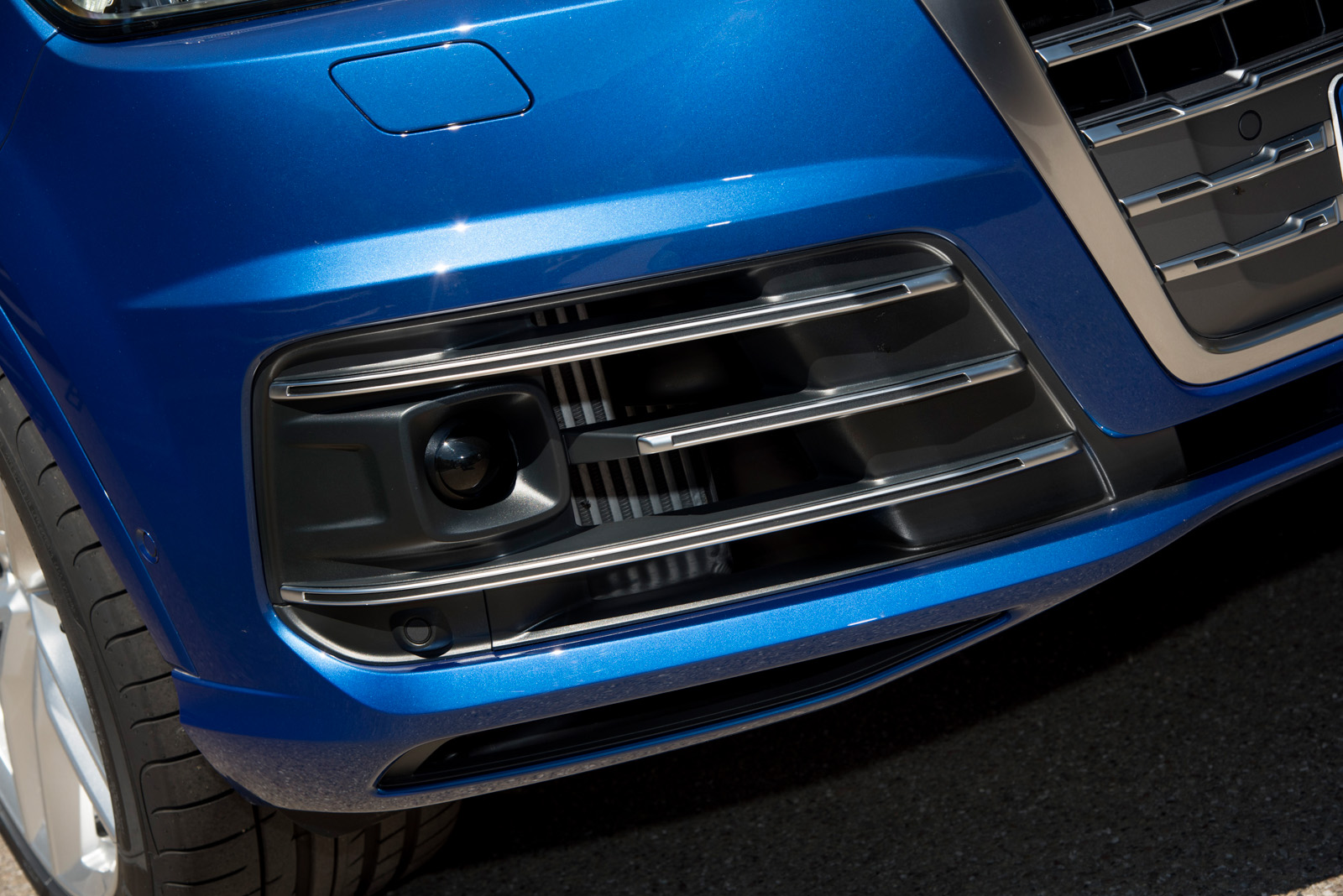
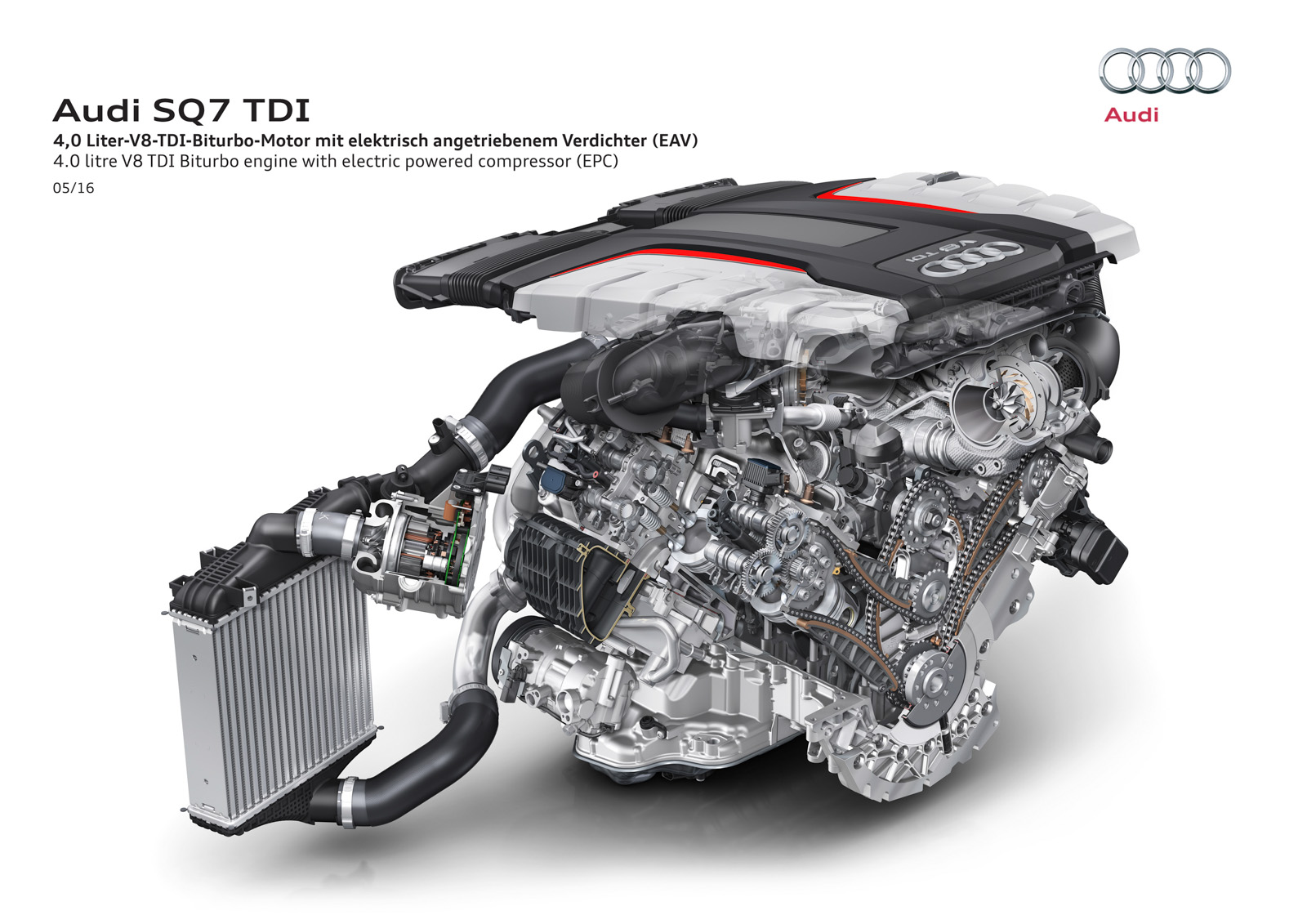
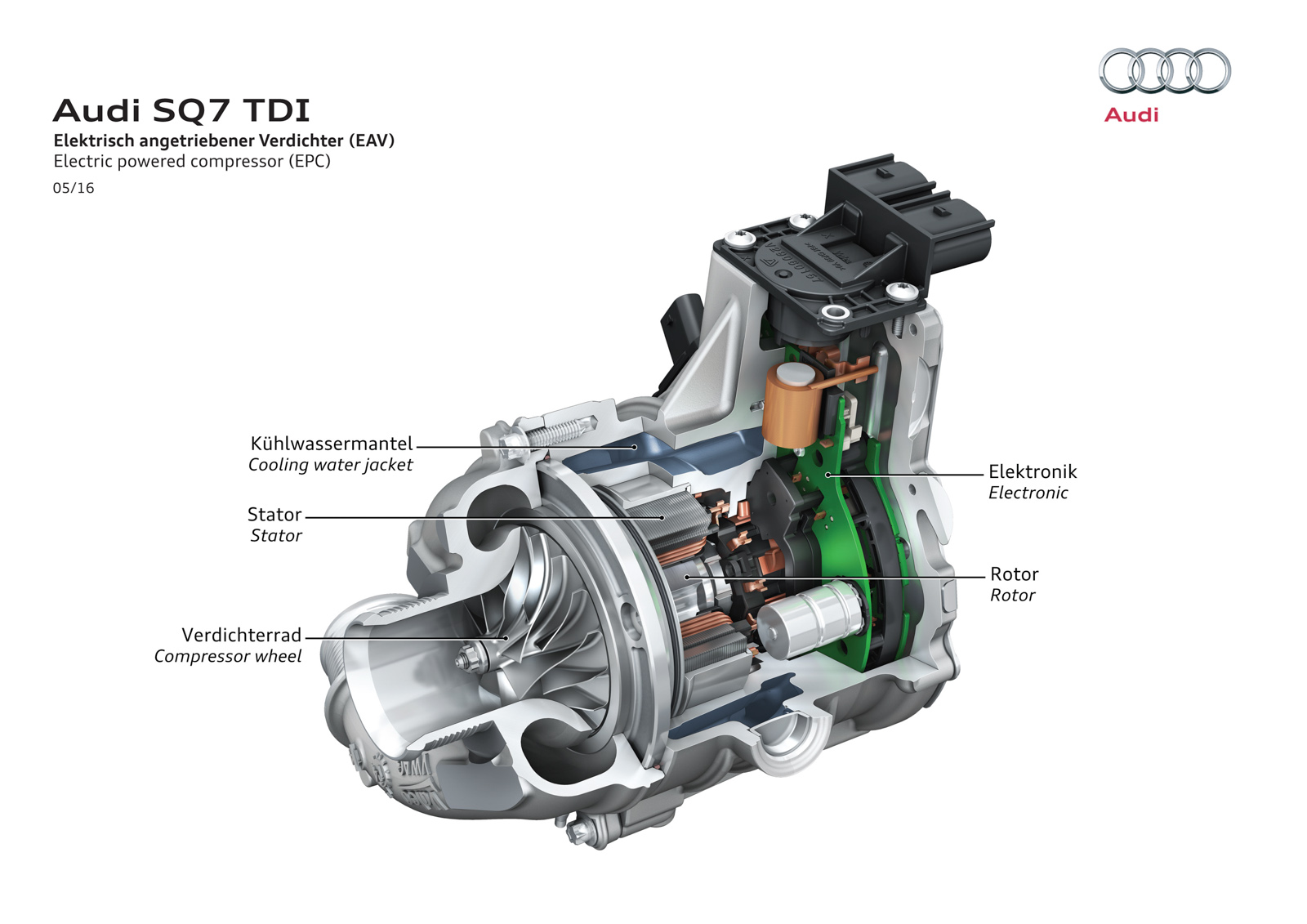
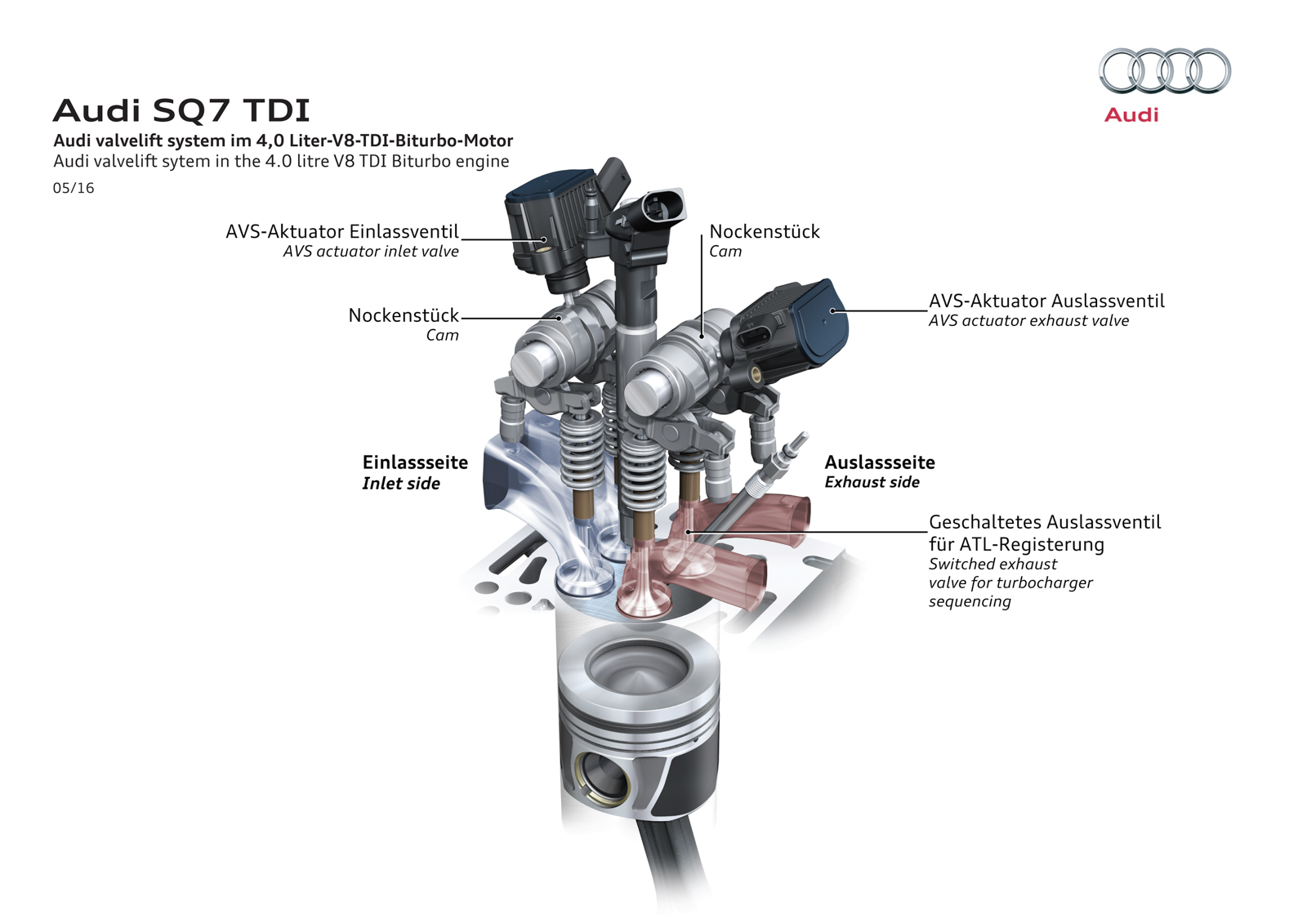

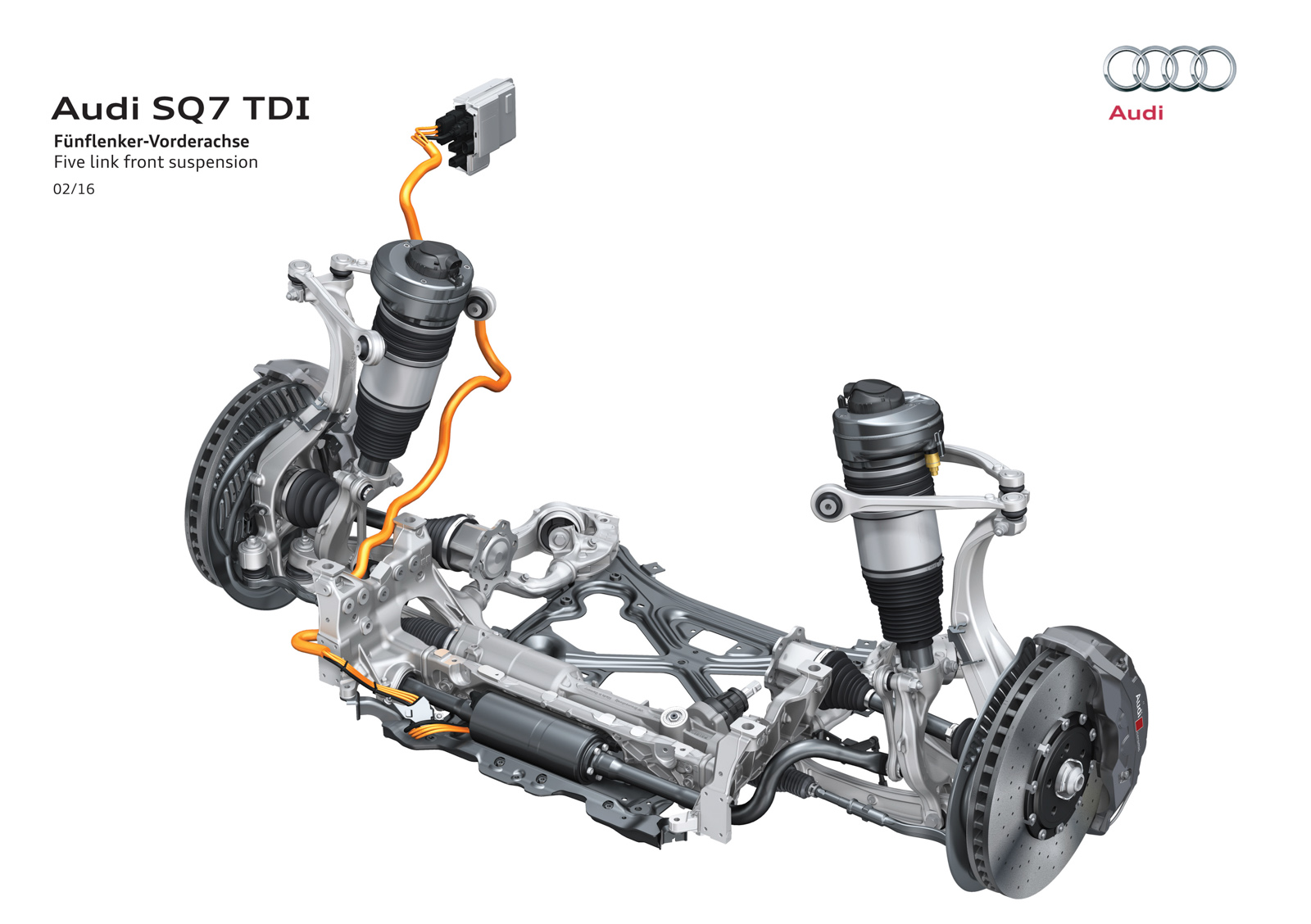

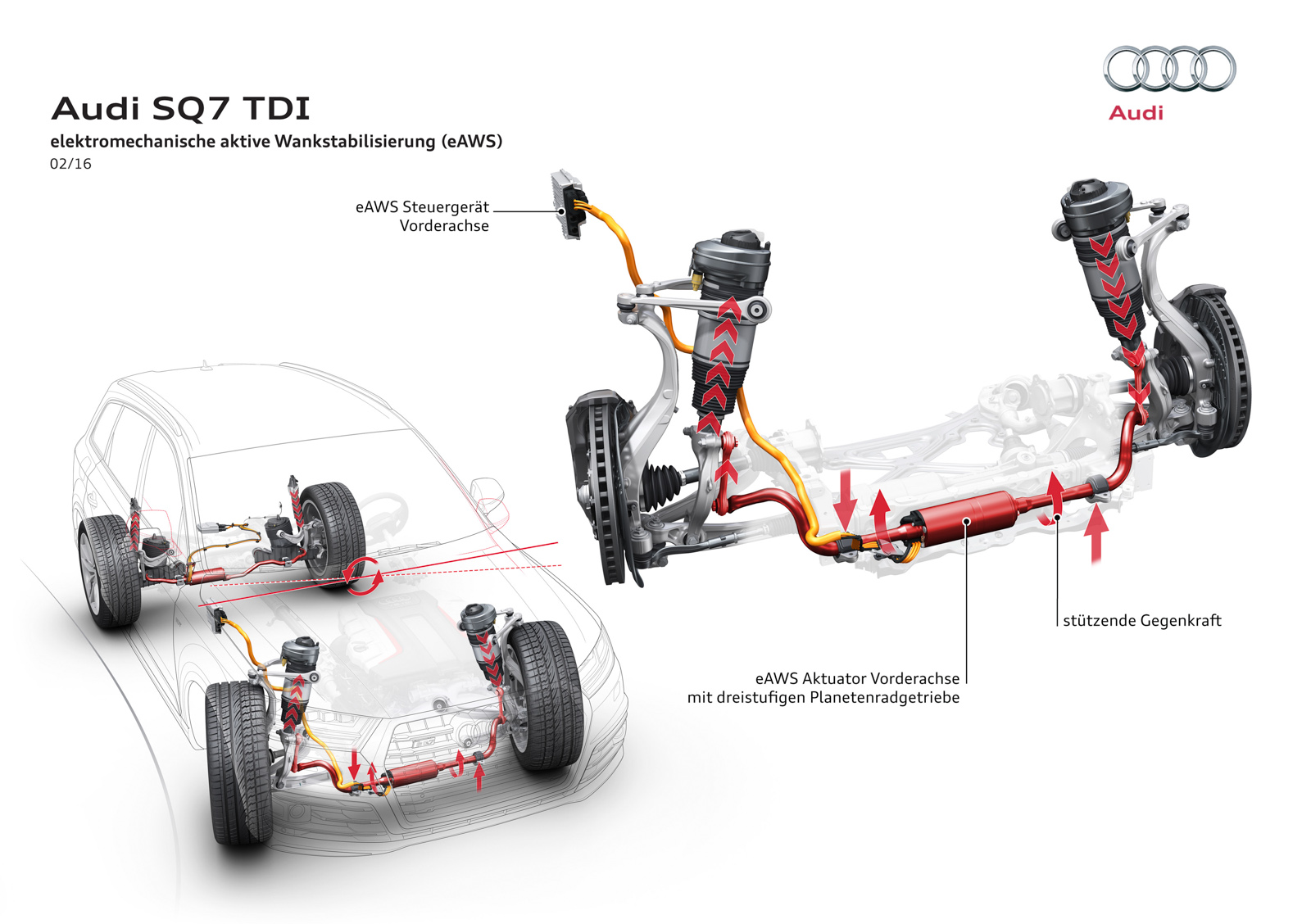
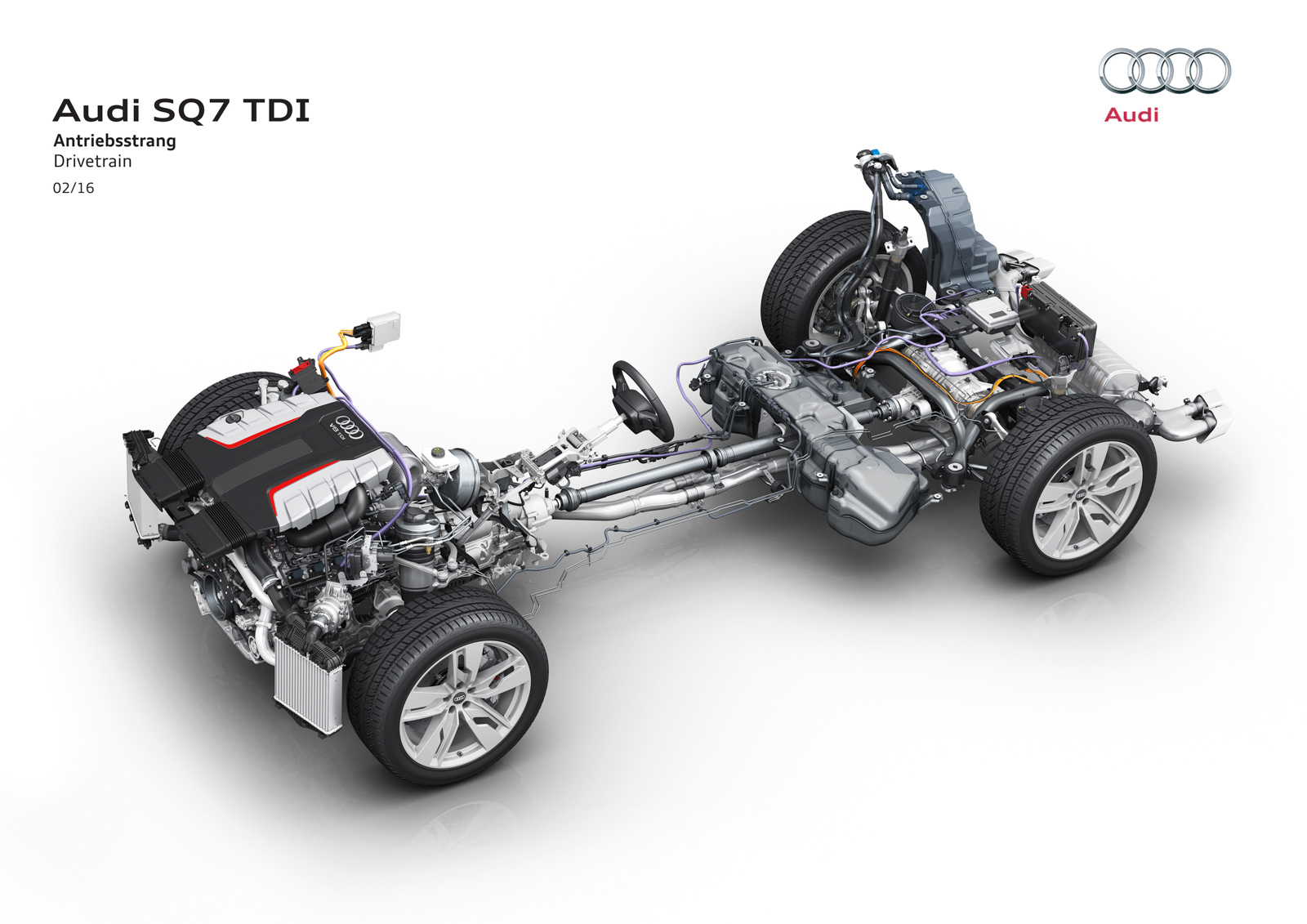

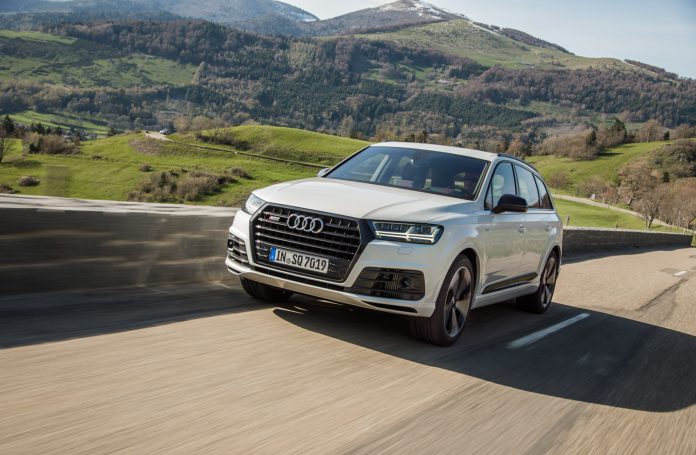
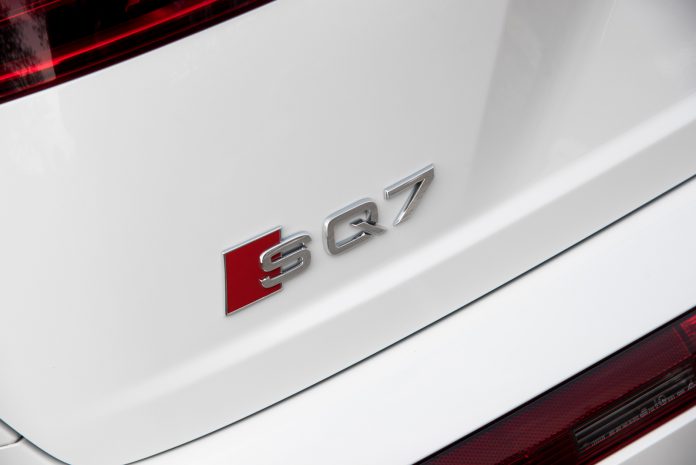
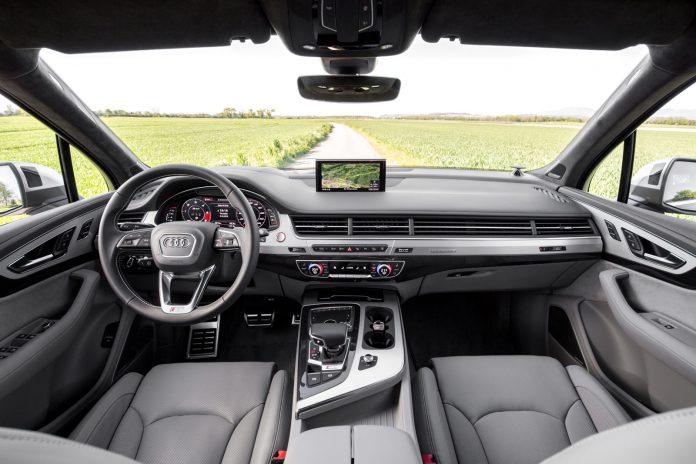

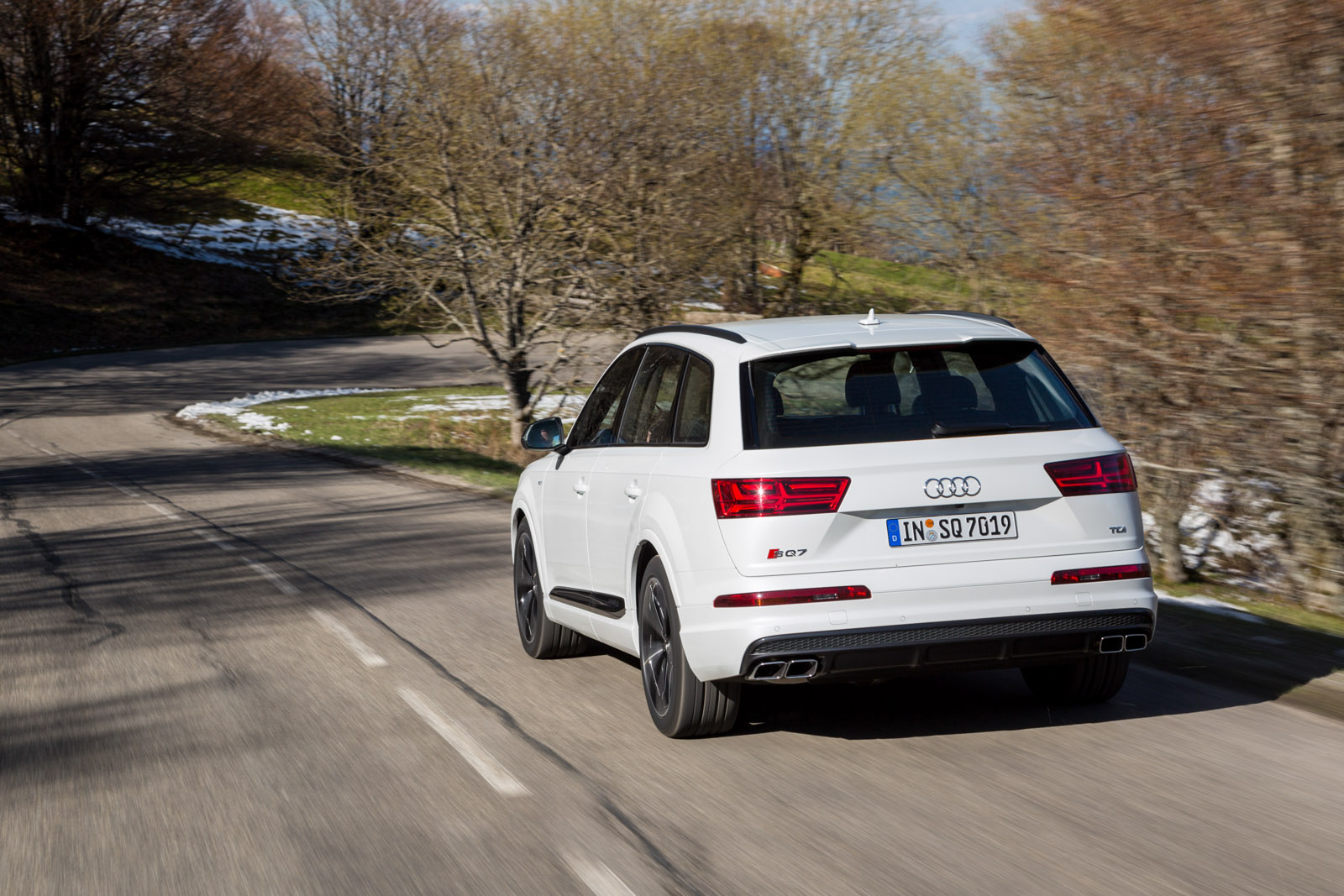
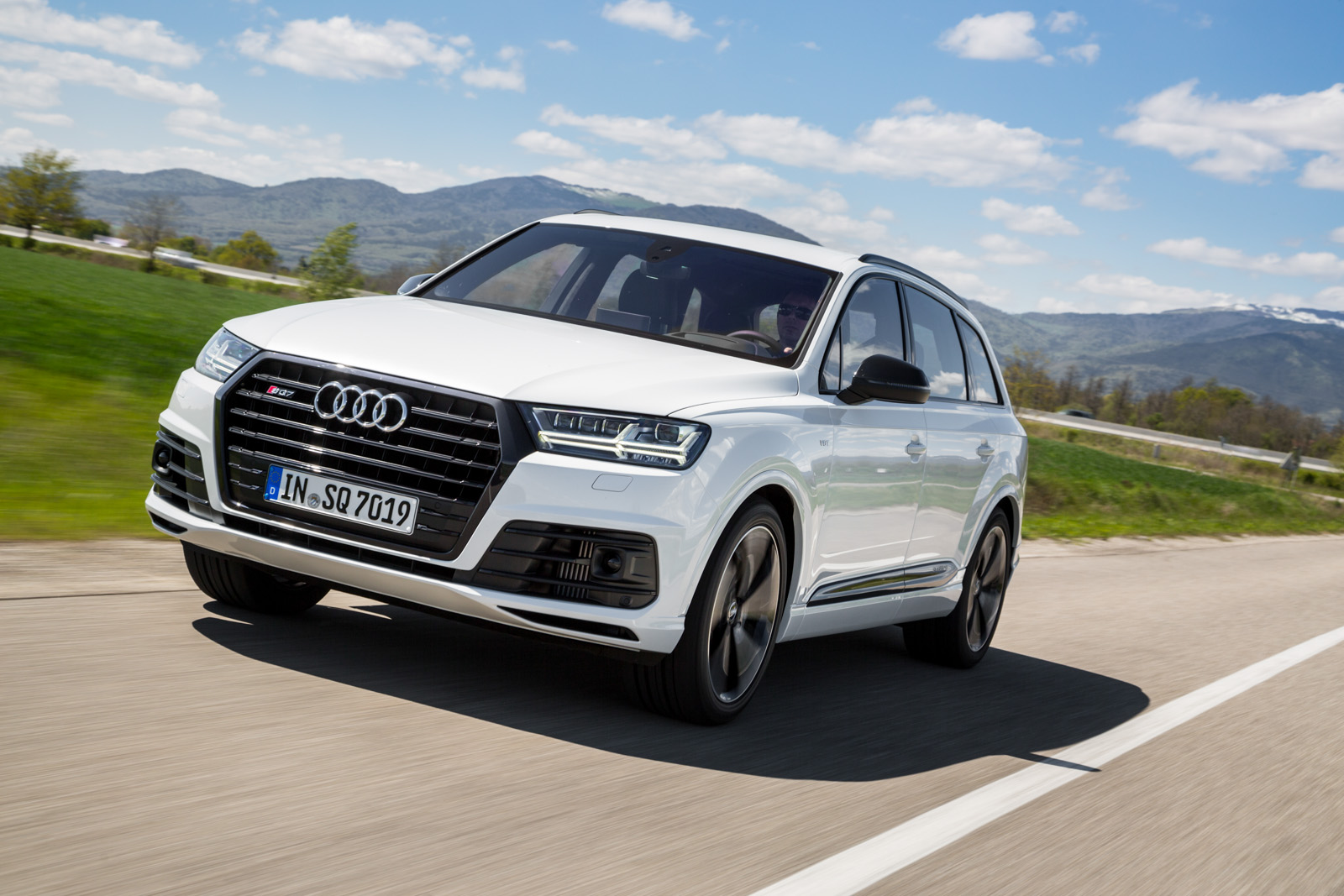
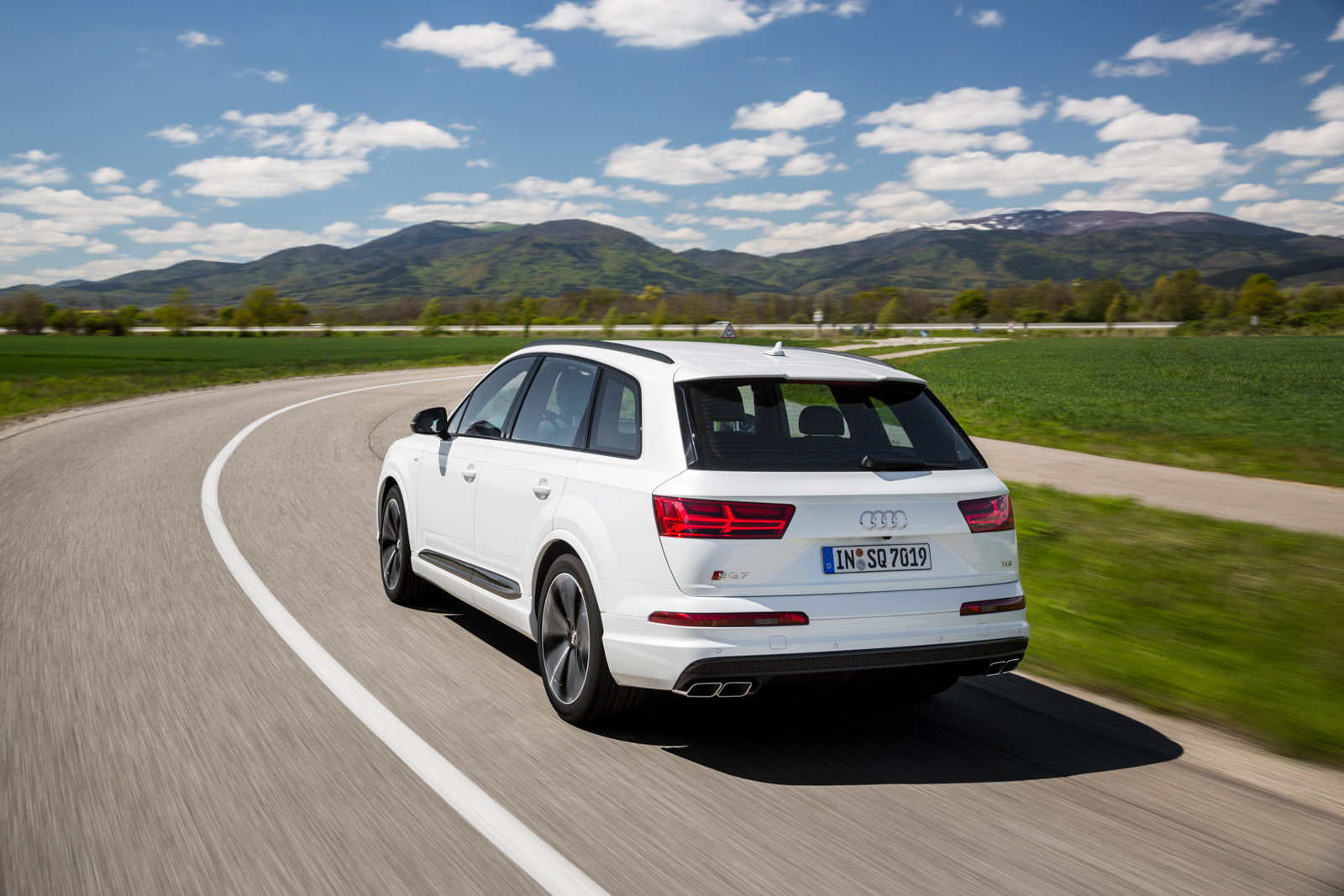



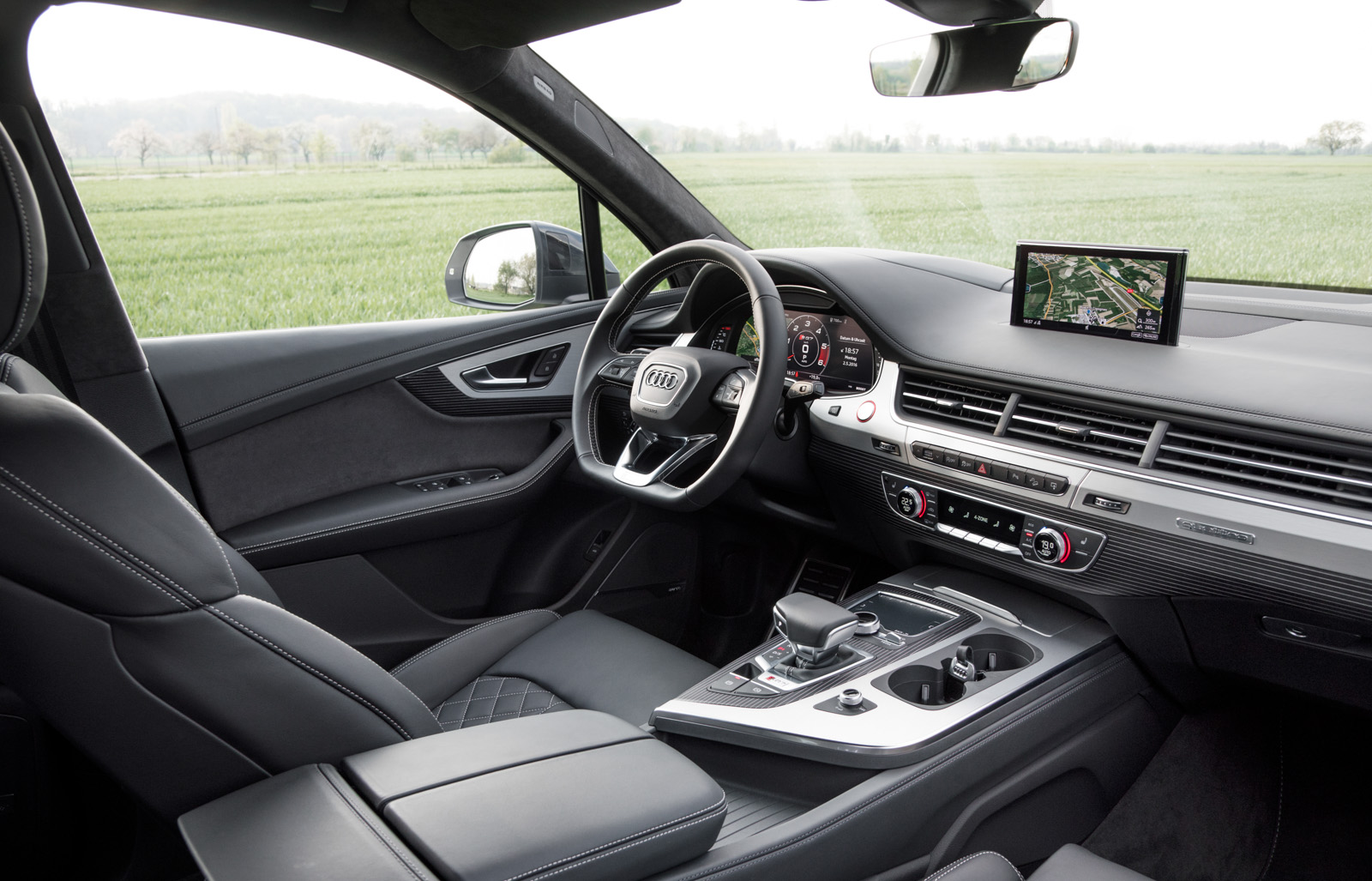
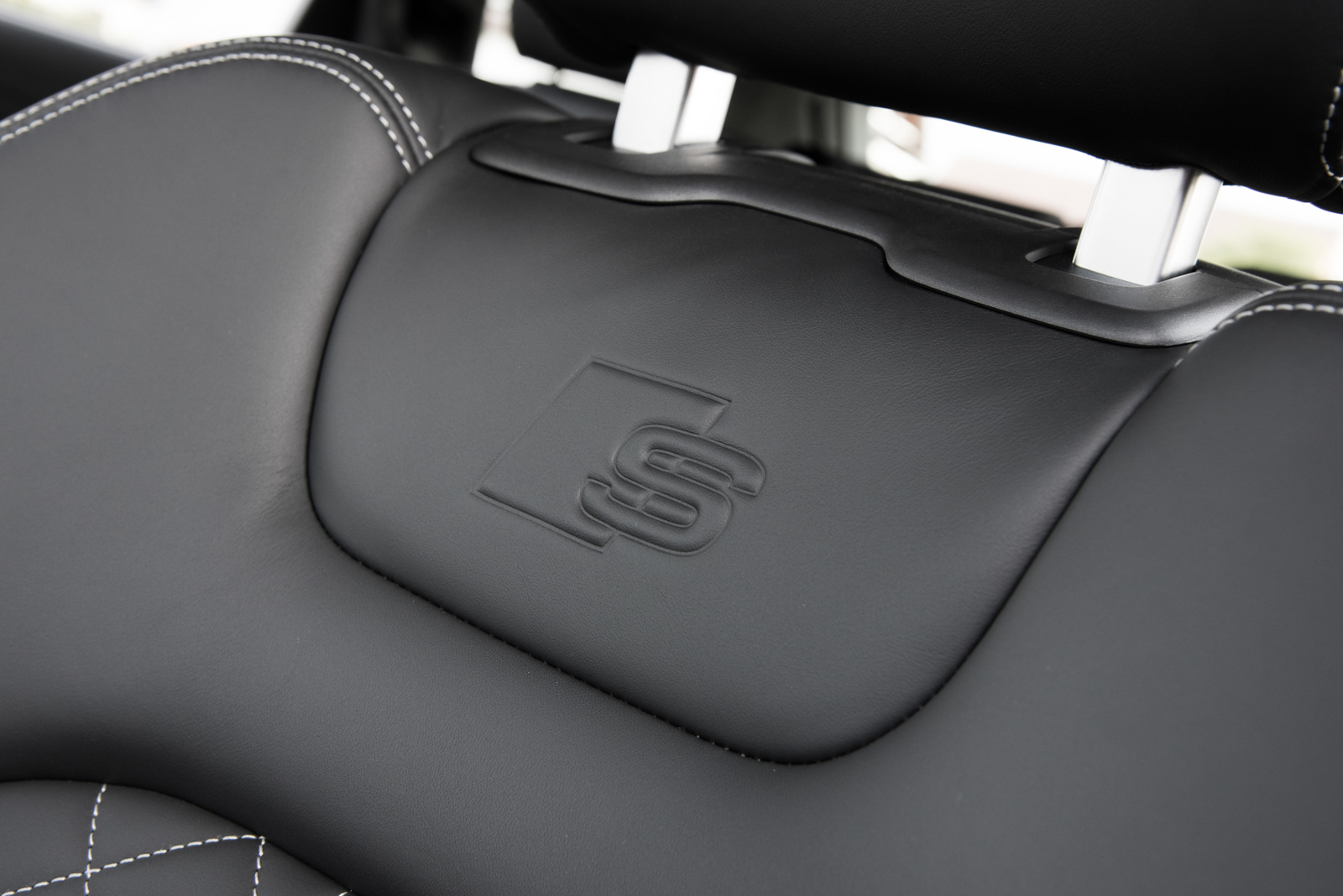
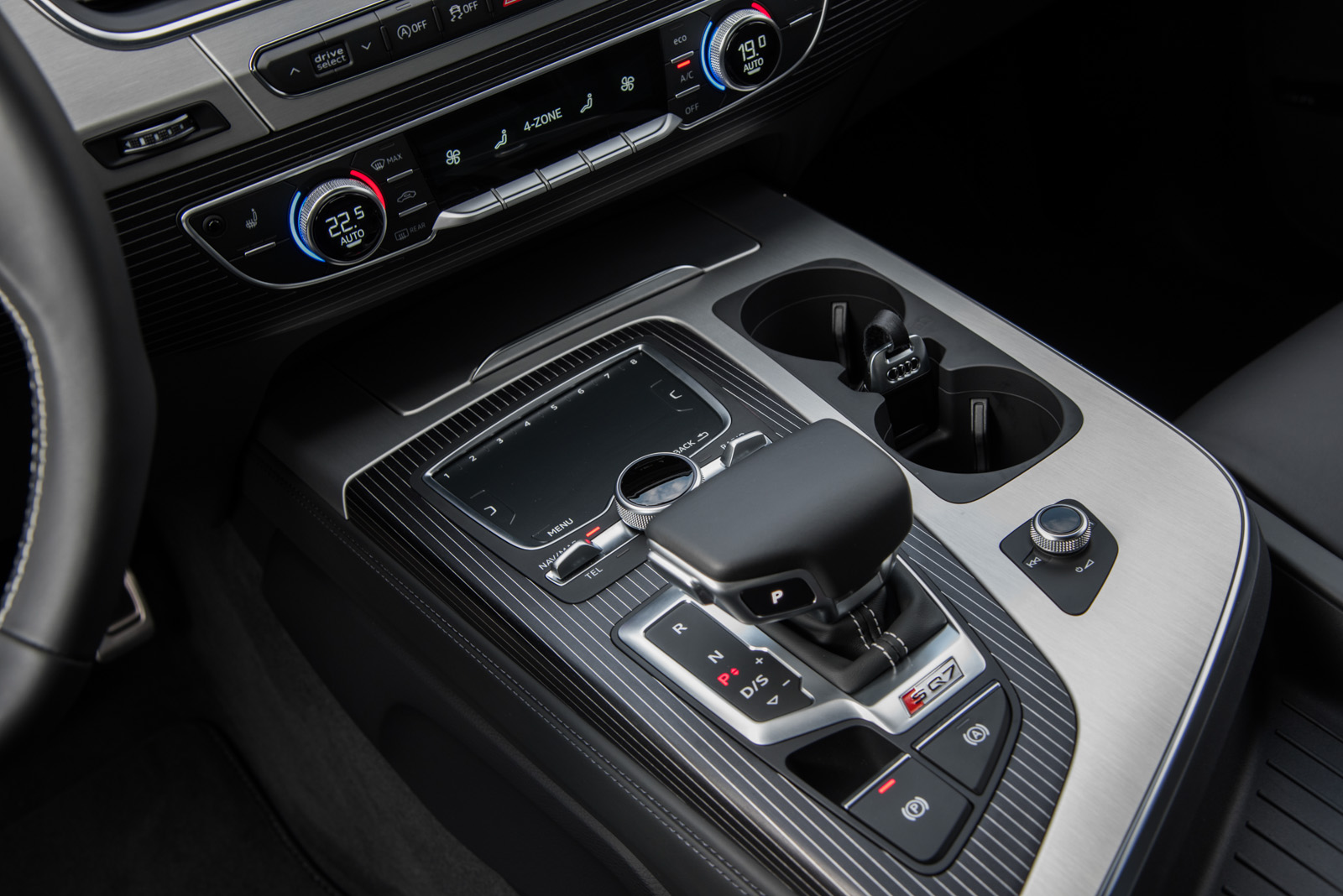
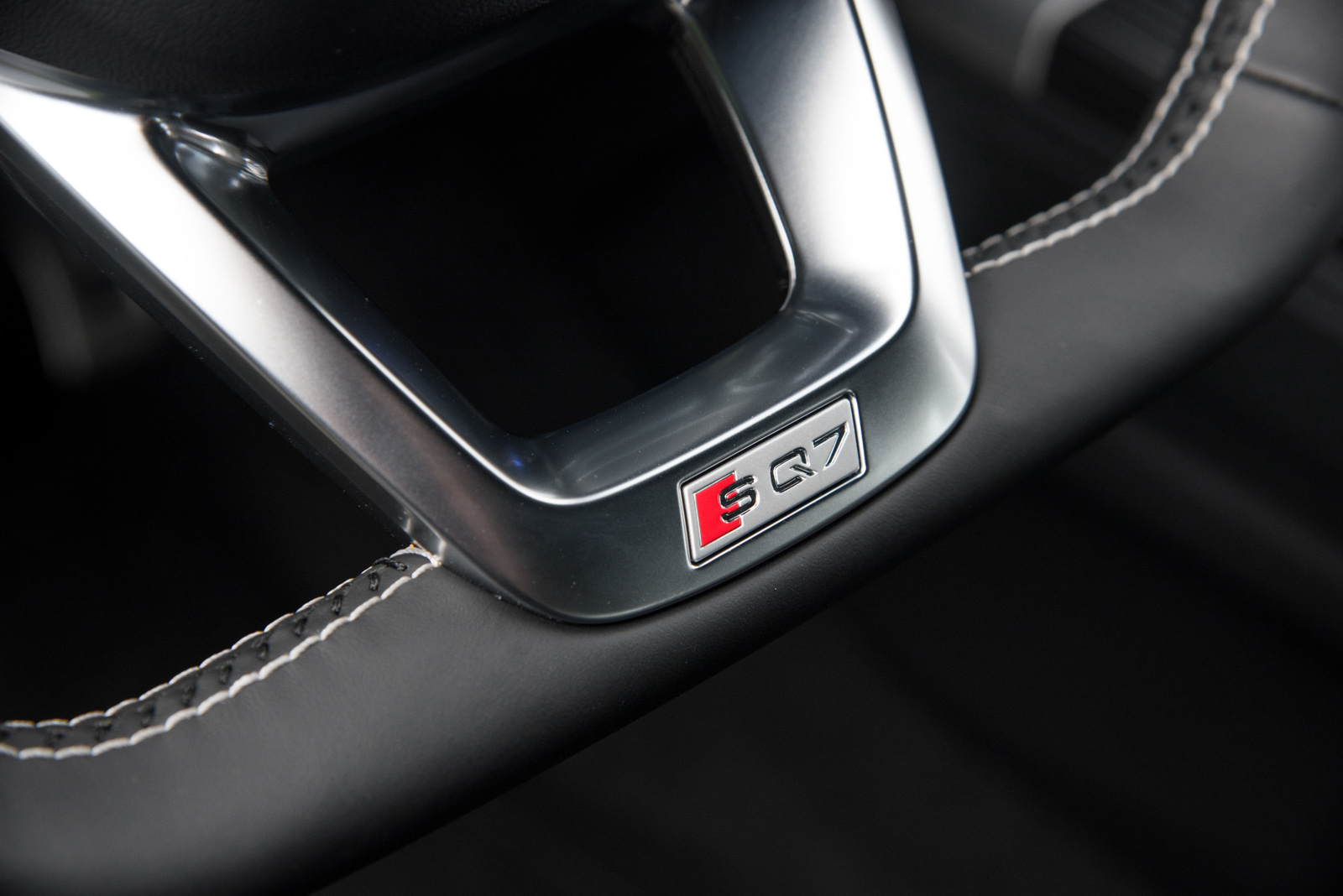
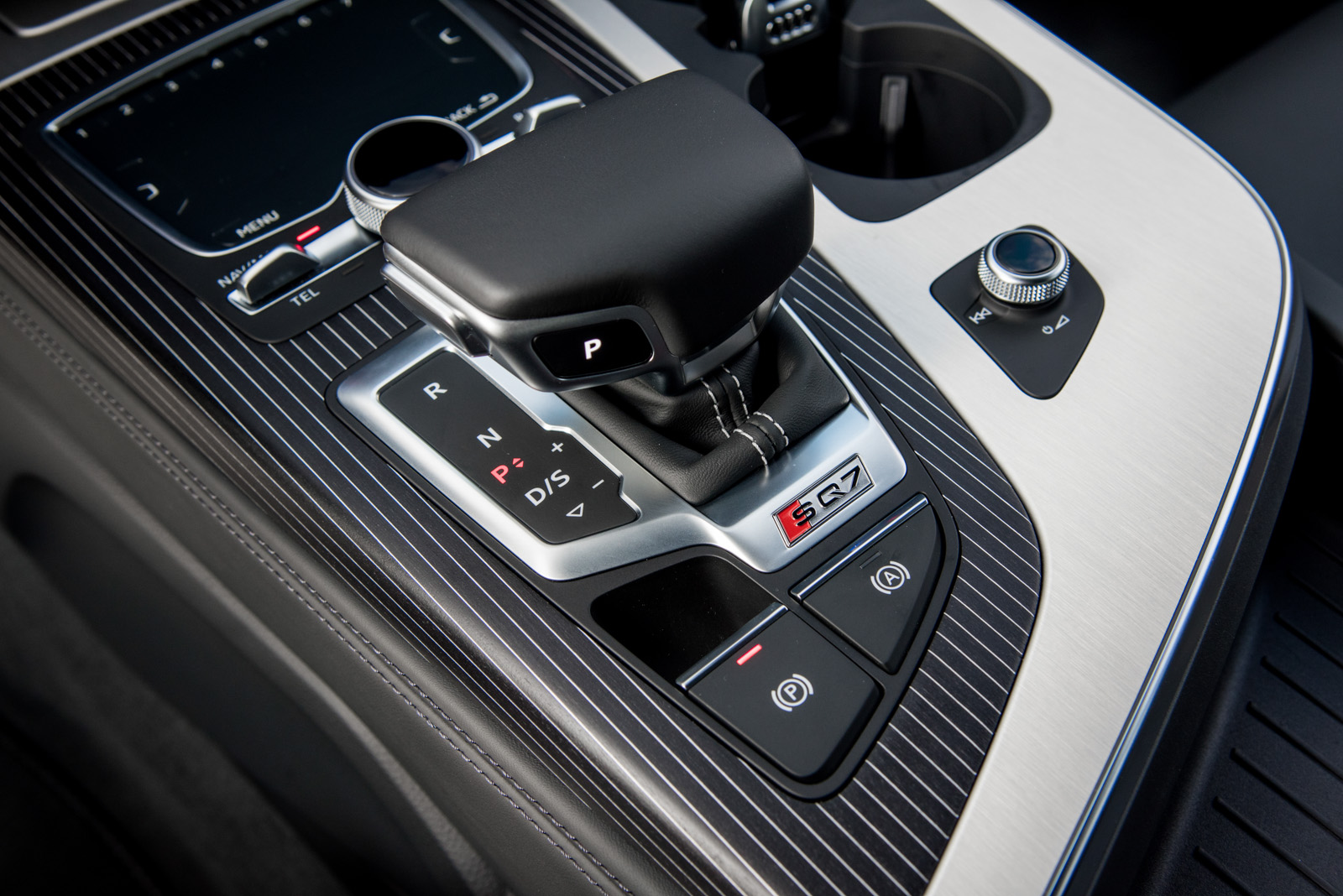

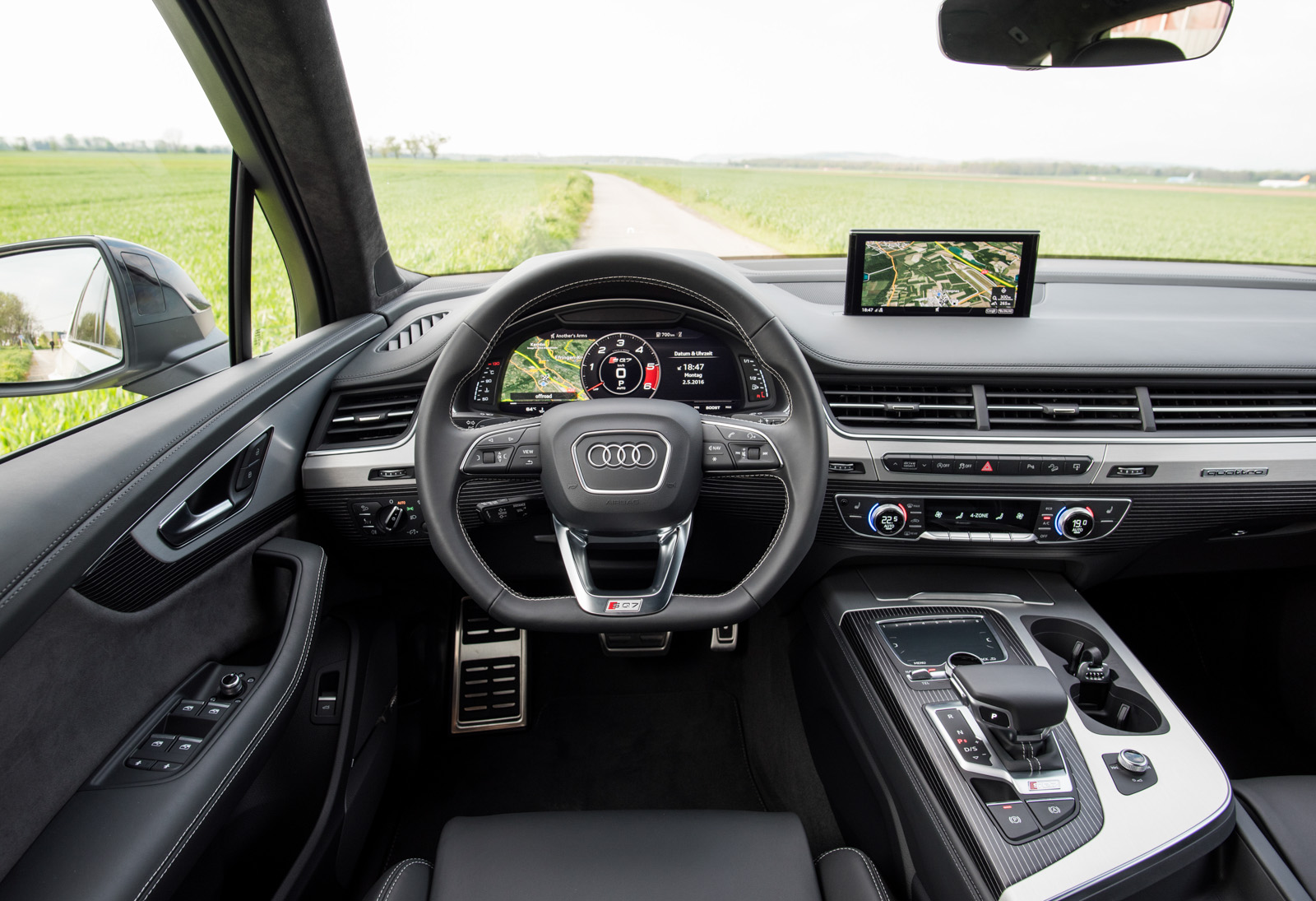
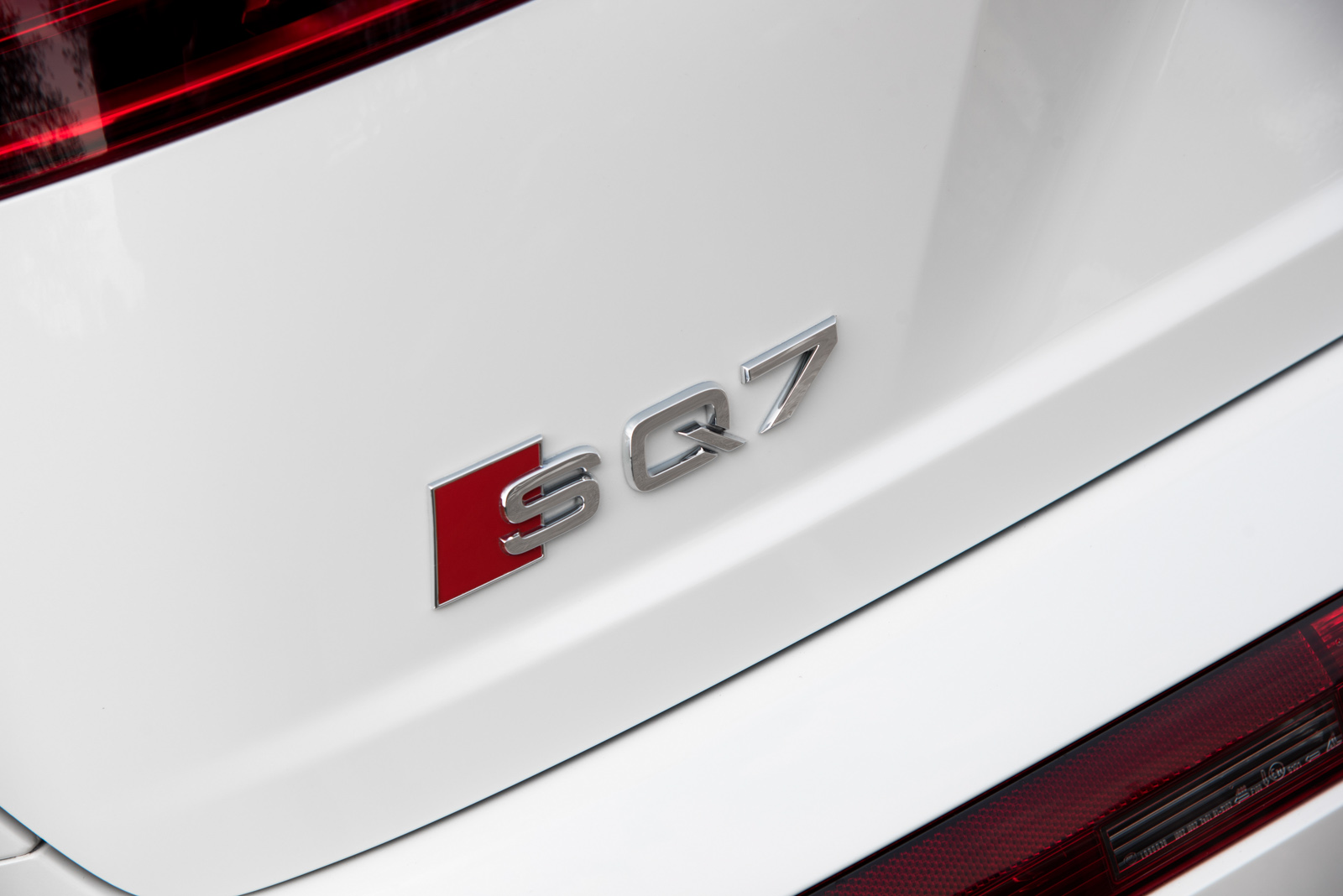
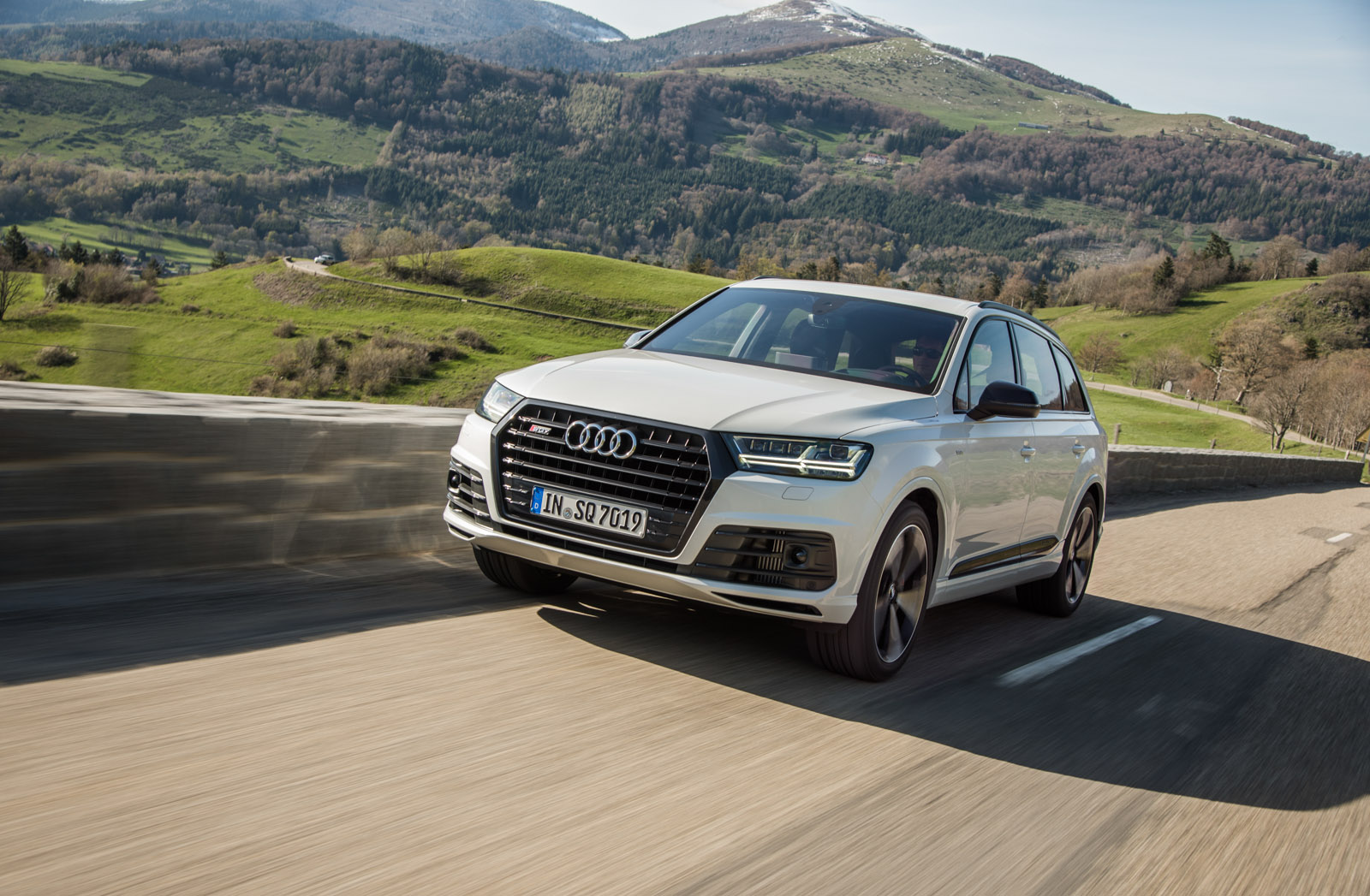
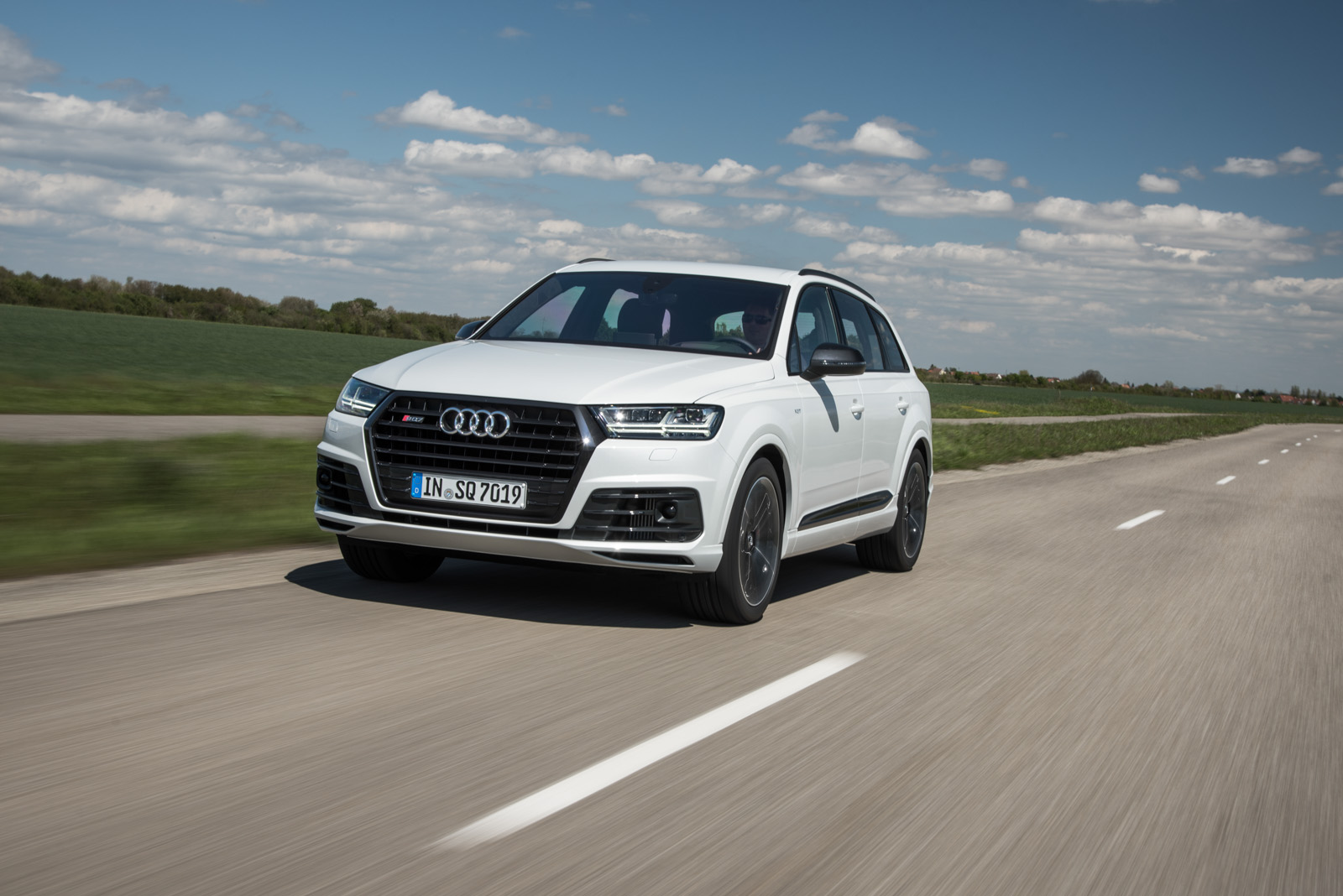

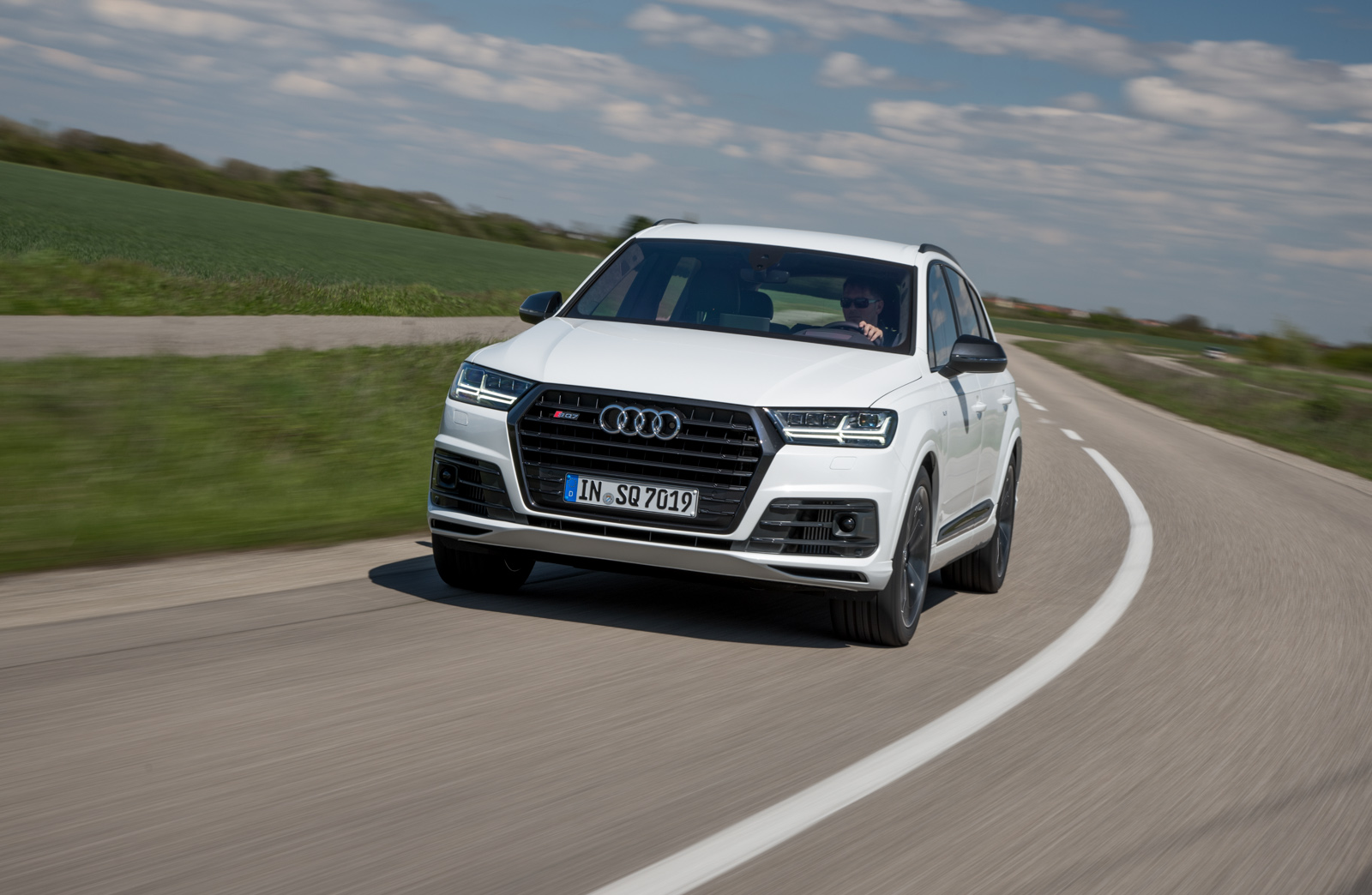
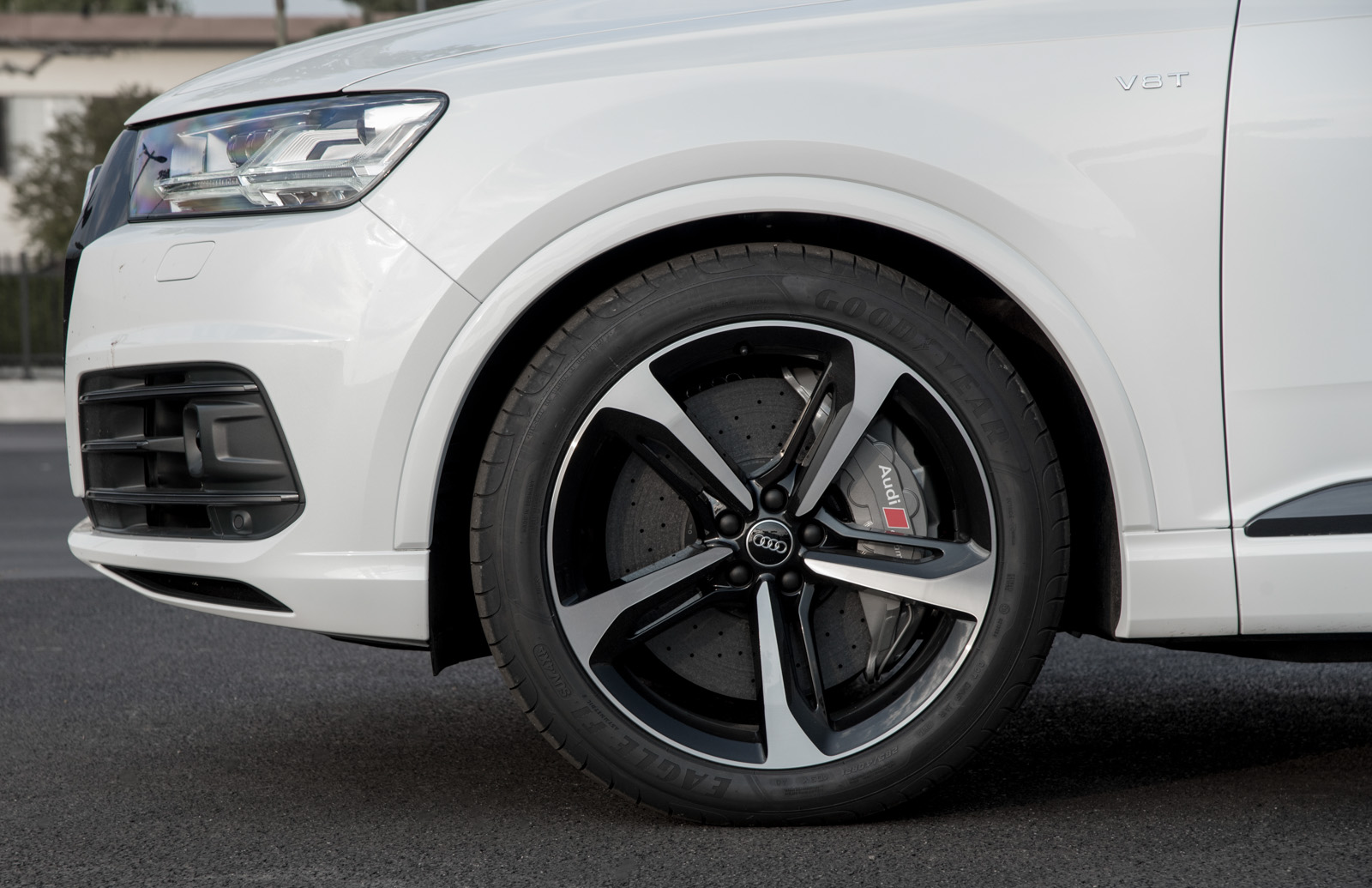

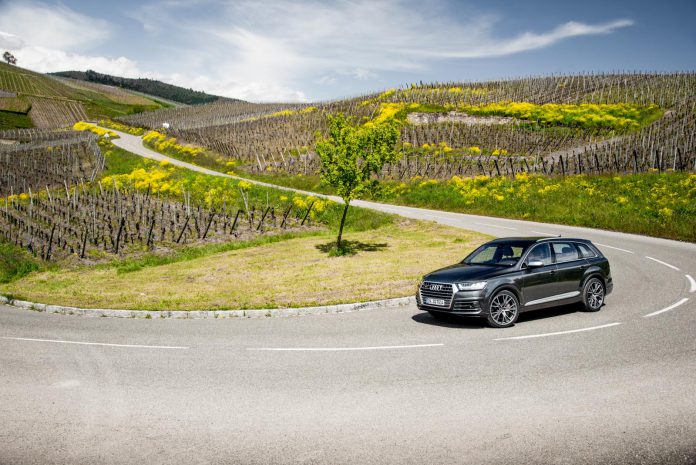
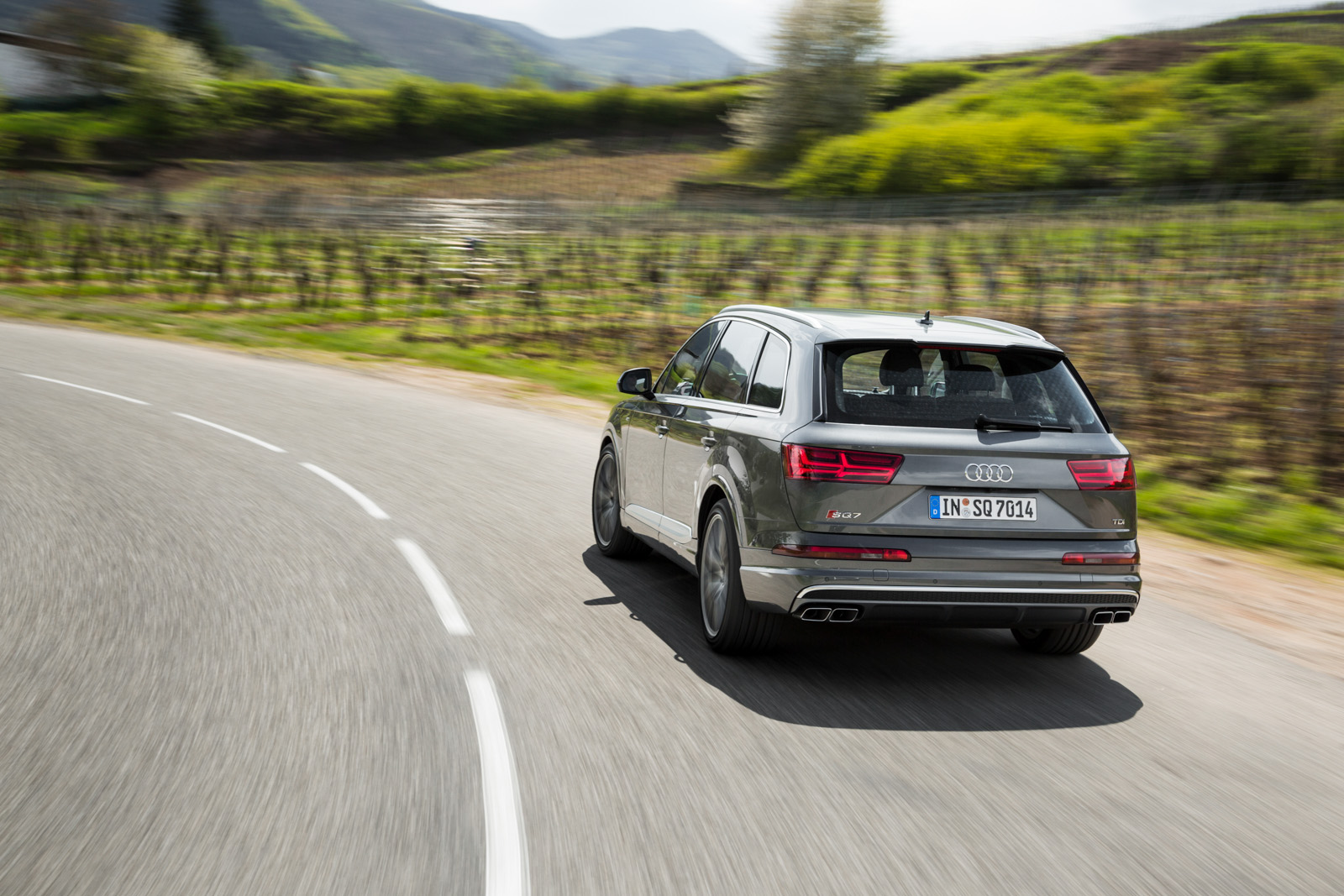
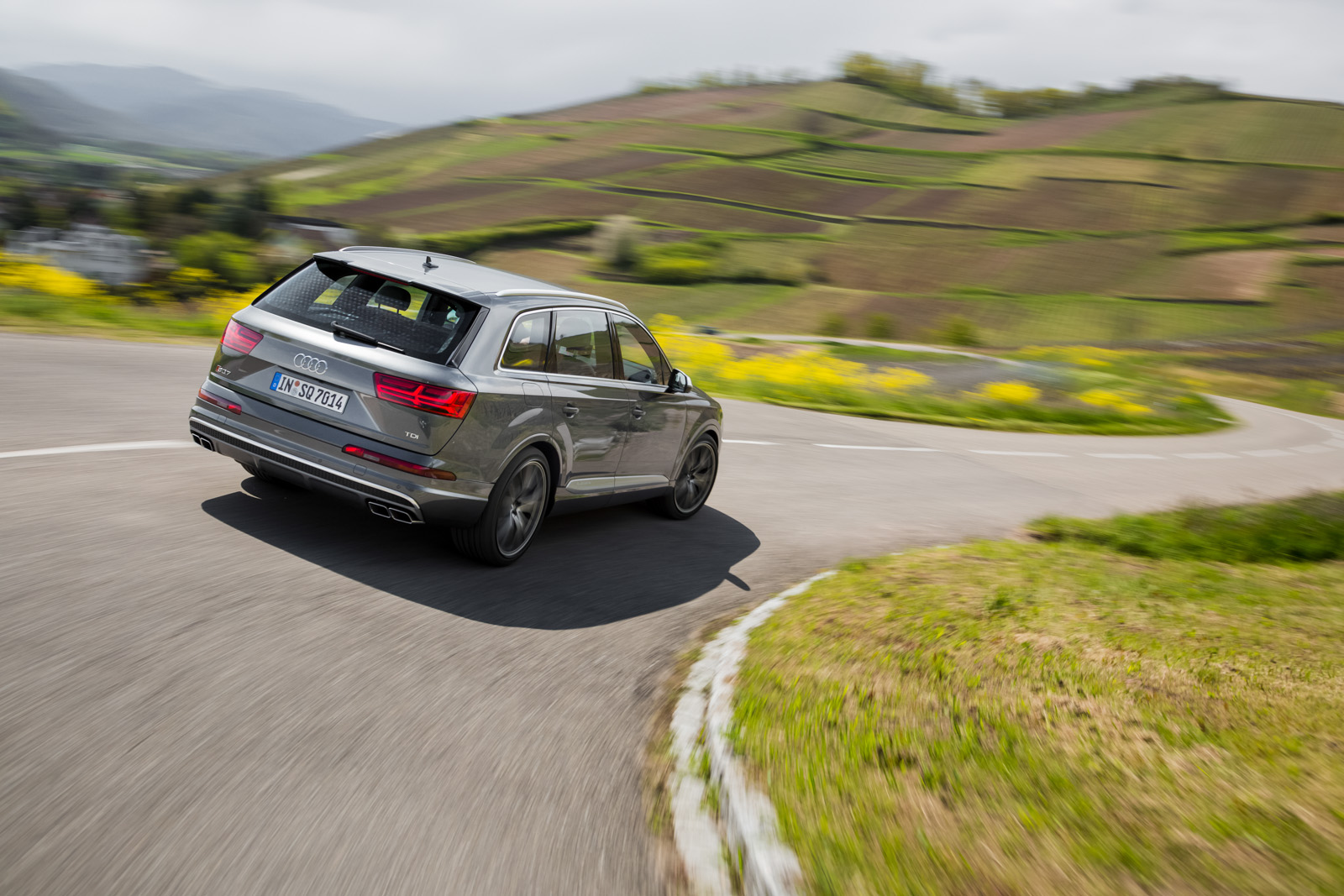
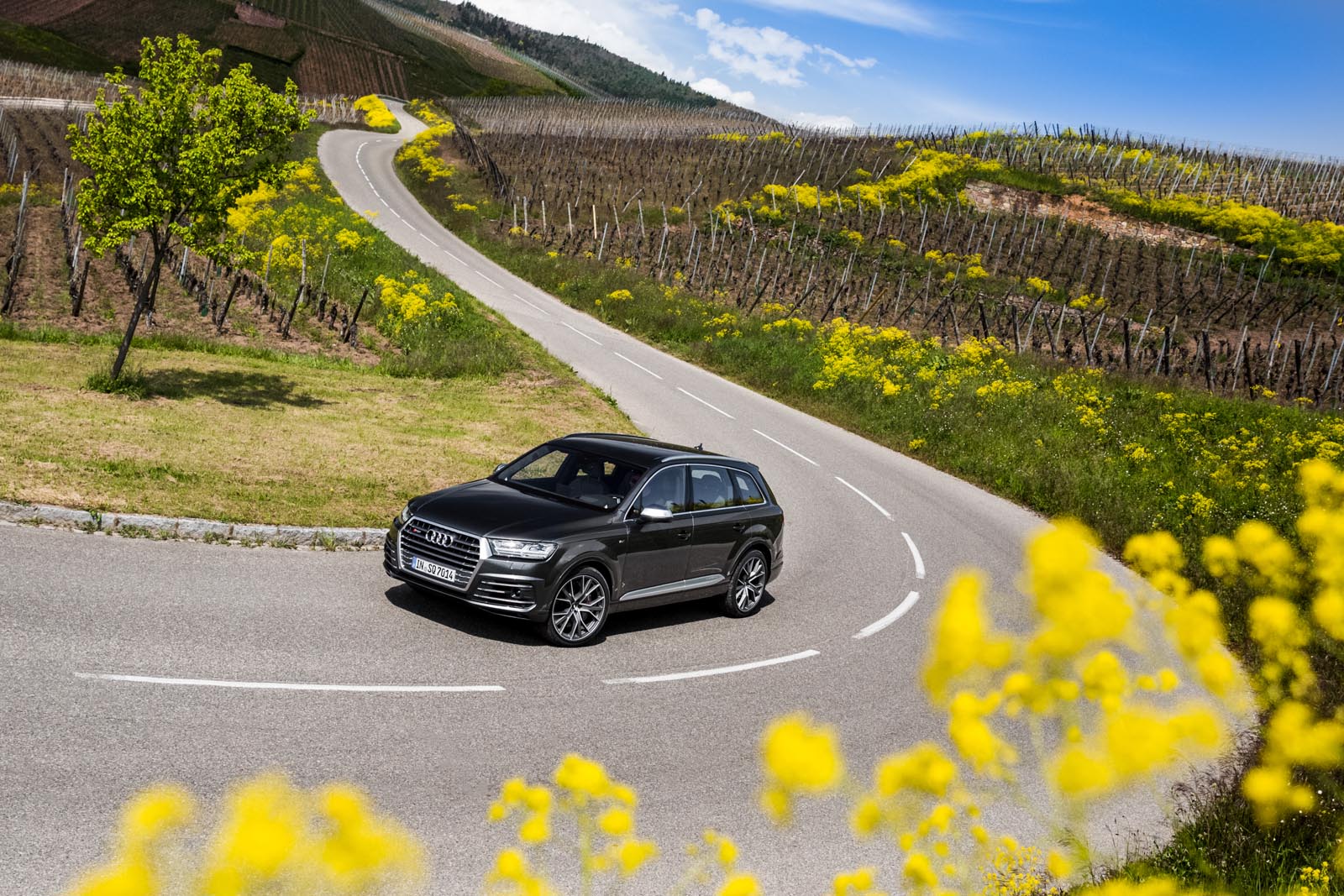

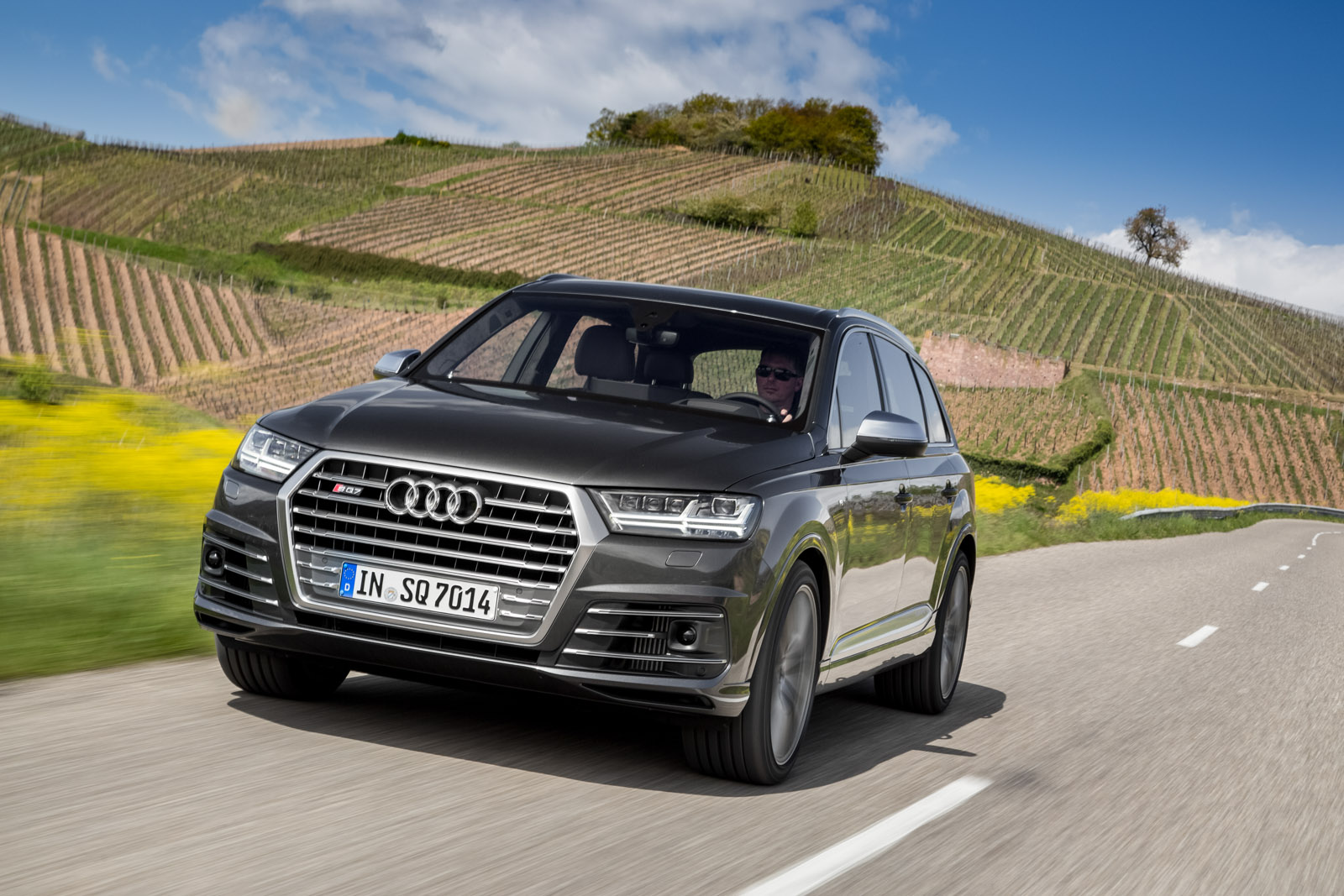

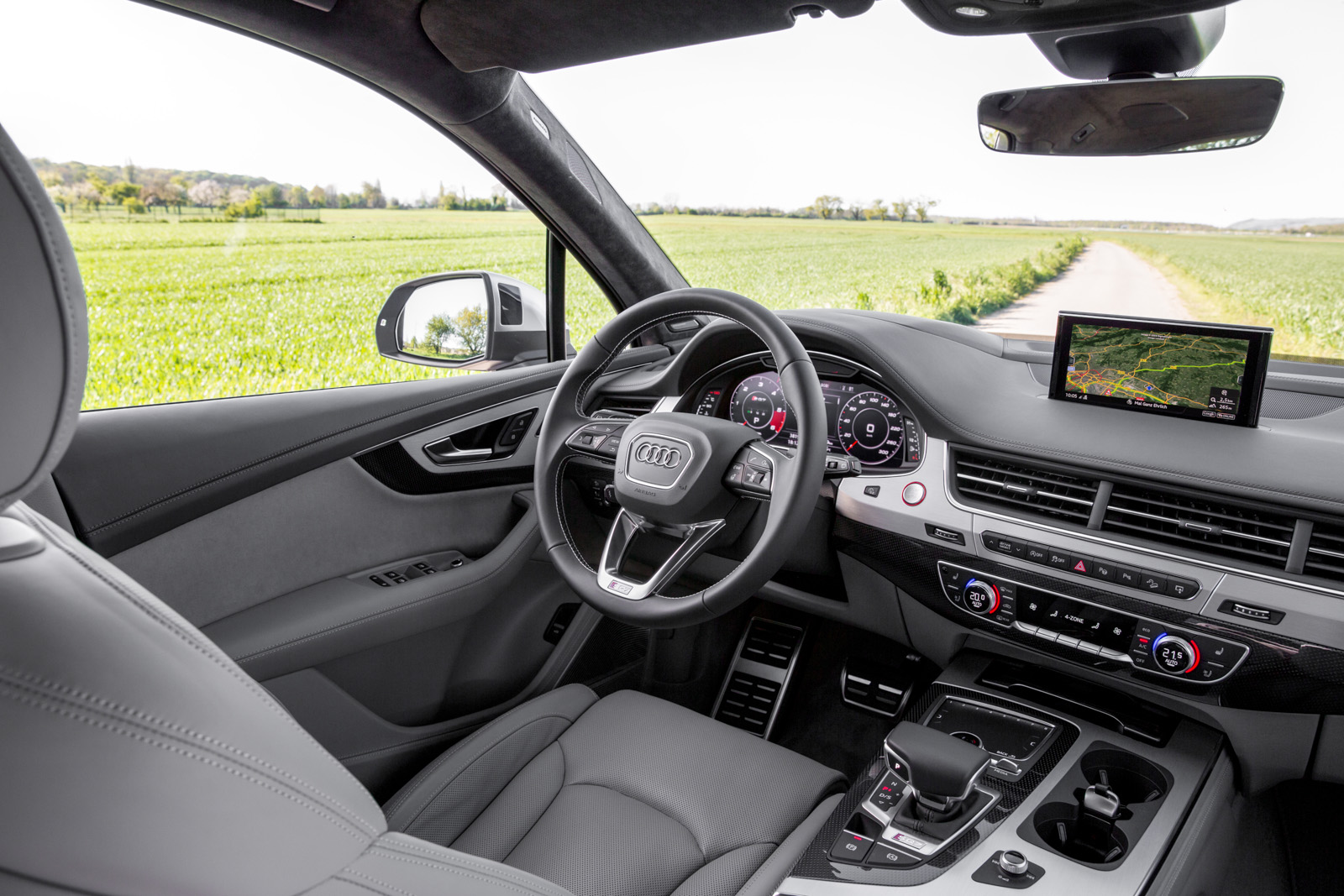
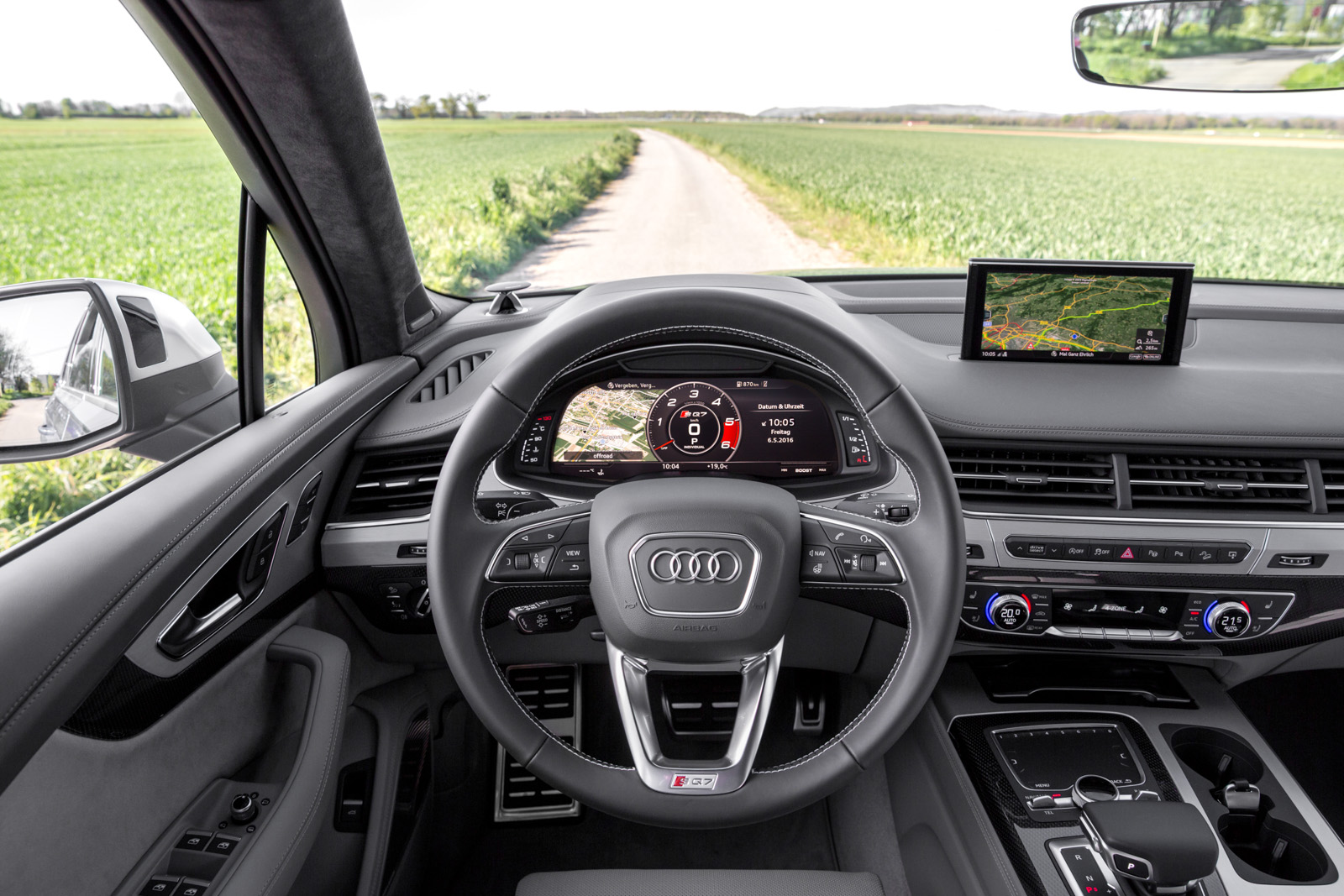
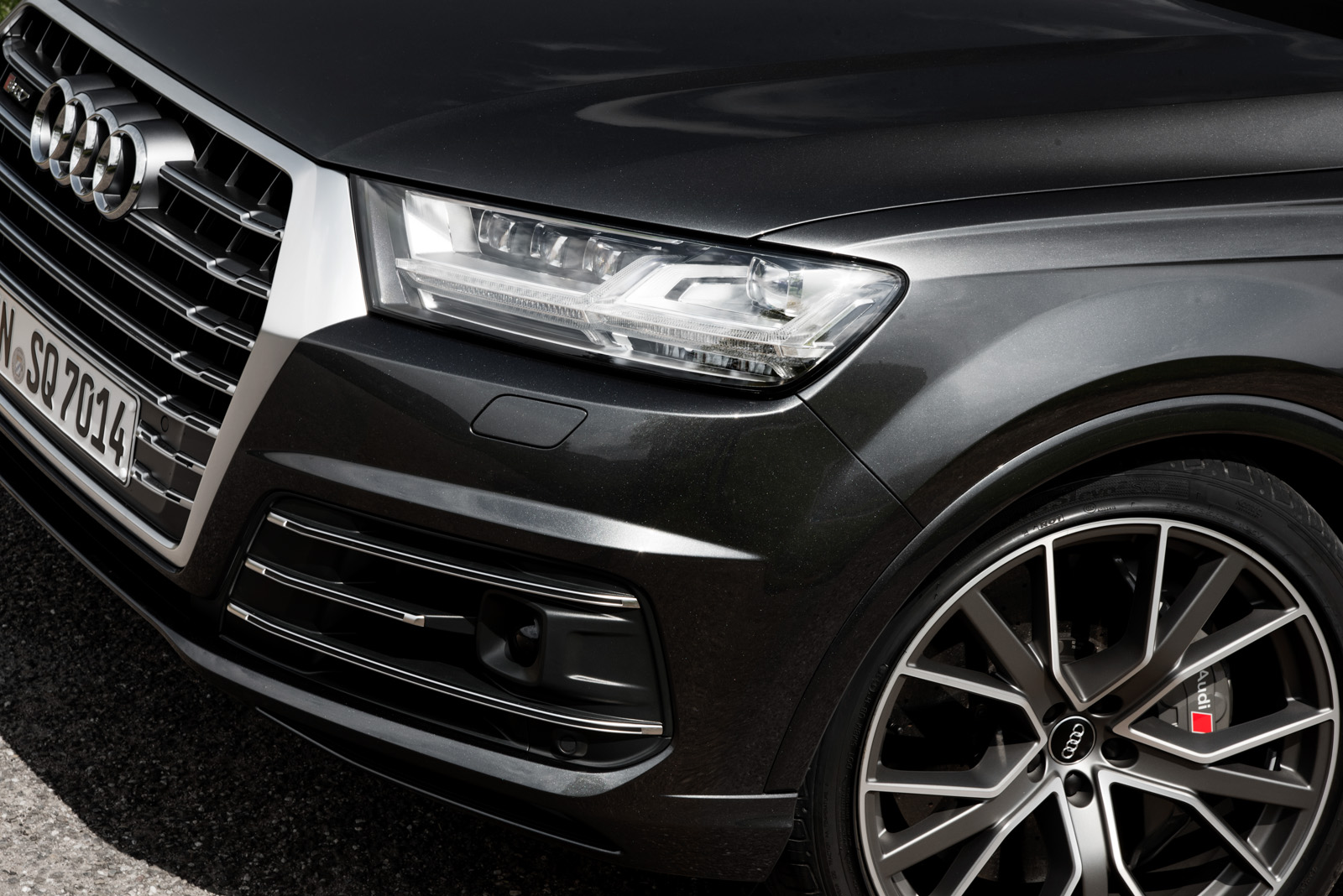
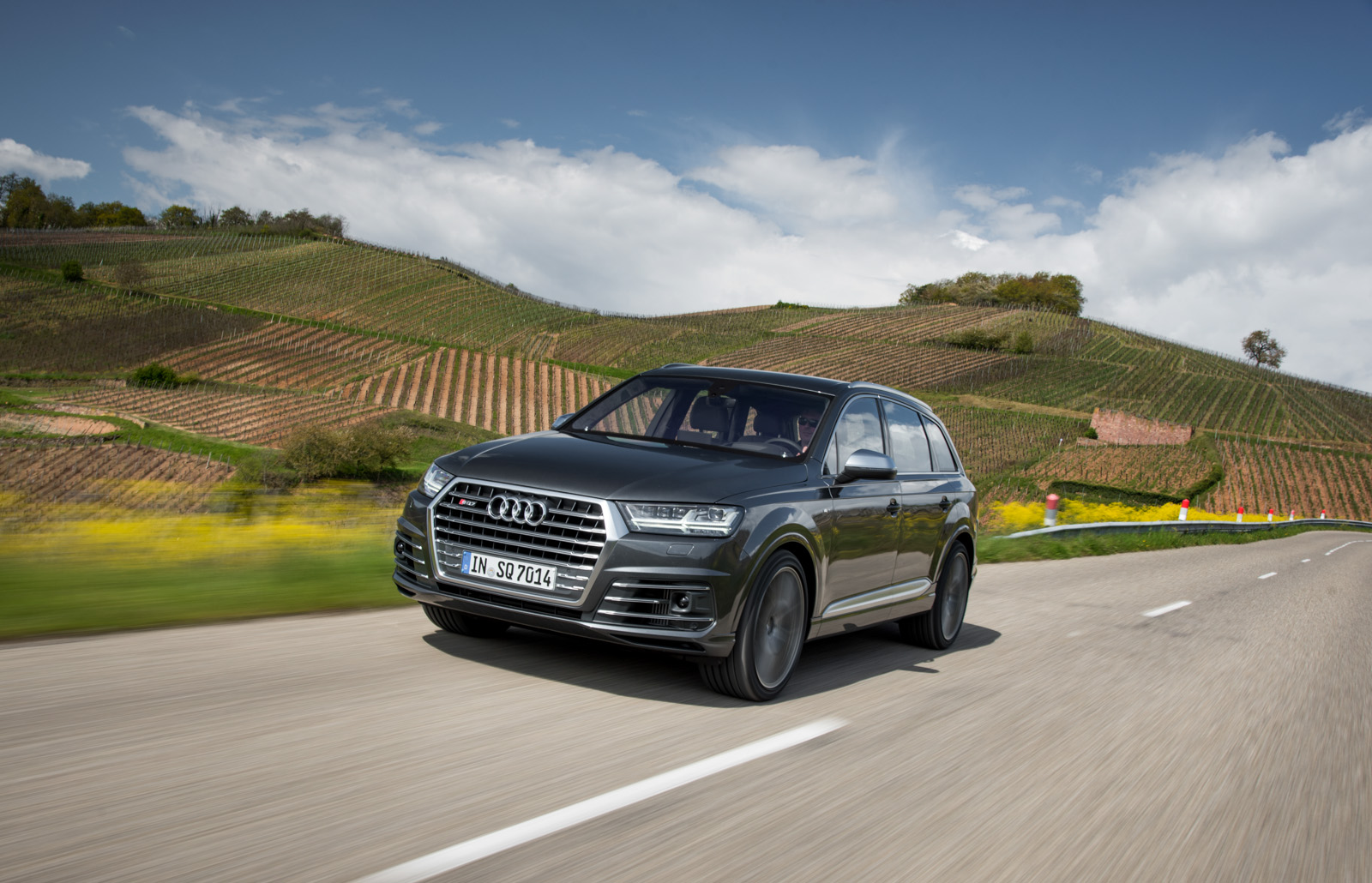
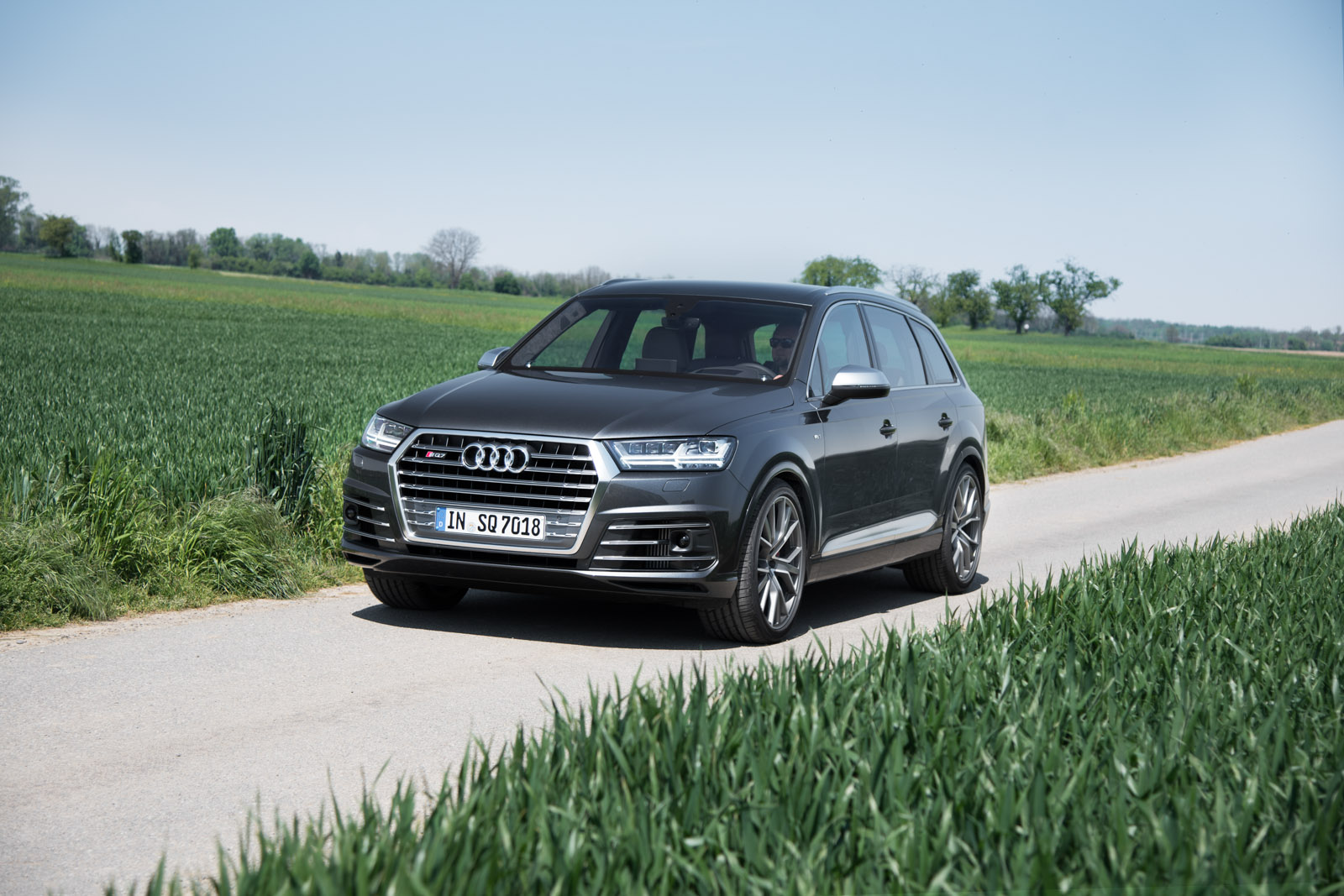




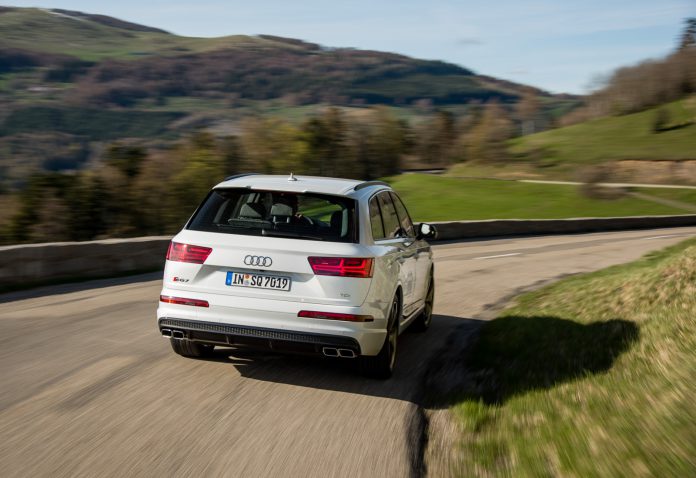











when can this car be ordered?